
I built this kit many years ago, and I picked it up again. To be precise, I remember that the previous kit was product number 028 and the inside of the kit was reproduced in terrible detail, and instead of that, the figure was not attached. This time it comes with 2 figures of German tank soldiers, so I think I will put them on. The 003 German Type I Tank A kit was released in the early 2000s. The first thing I felt when I opened the box was the exquisite precision of that time. From the suspension structure of the undercarriage, the fine rivets, and the molding on the back of the tank, we can feel the enthusiasm of the maker.
Now, there are a lot of precision tank kits from Dragon, AFV Club, Takom and Border models, but I think the Tristar products were really ahead of their time. In particular, it was quite a surprise to me, even as I was making a lot of tank plastic models at the time, that a relatively minor vehicle, Panzerkampfwagen I, was made into such a complete kit. Unfortunately, Tristar has gone out of business and it is difficult to get a new one. For that reason, the one that remains in your hands is like a “”legacy”” that tells the story of the golden age of models in the past. Well, maybe not all of them, but Hobby Boss takes the molds and produces them, so I think we can get some of them.
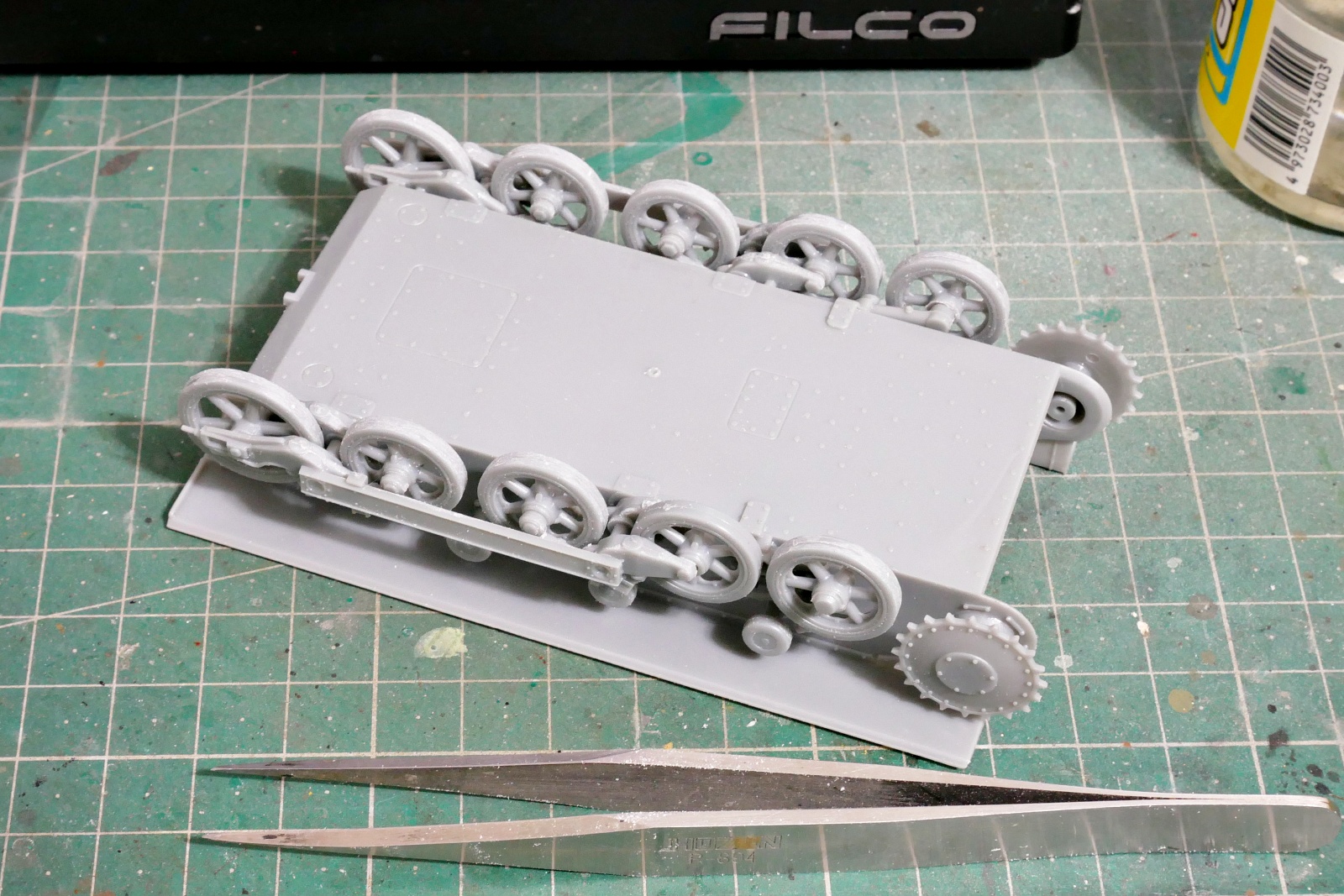
When I actually start assembling it, there are not so many parts, so I can easily assemble the chassis. The instructions in this manual are quite detailed. There is a slight difference in the mold between the front and the back of the rolling wheel, so I was instructed to install it carefully. I hardly know. And I adjusted the rolling wheel to be as straight as possible.
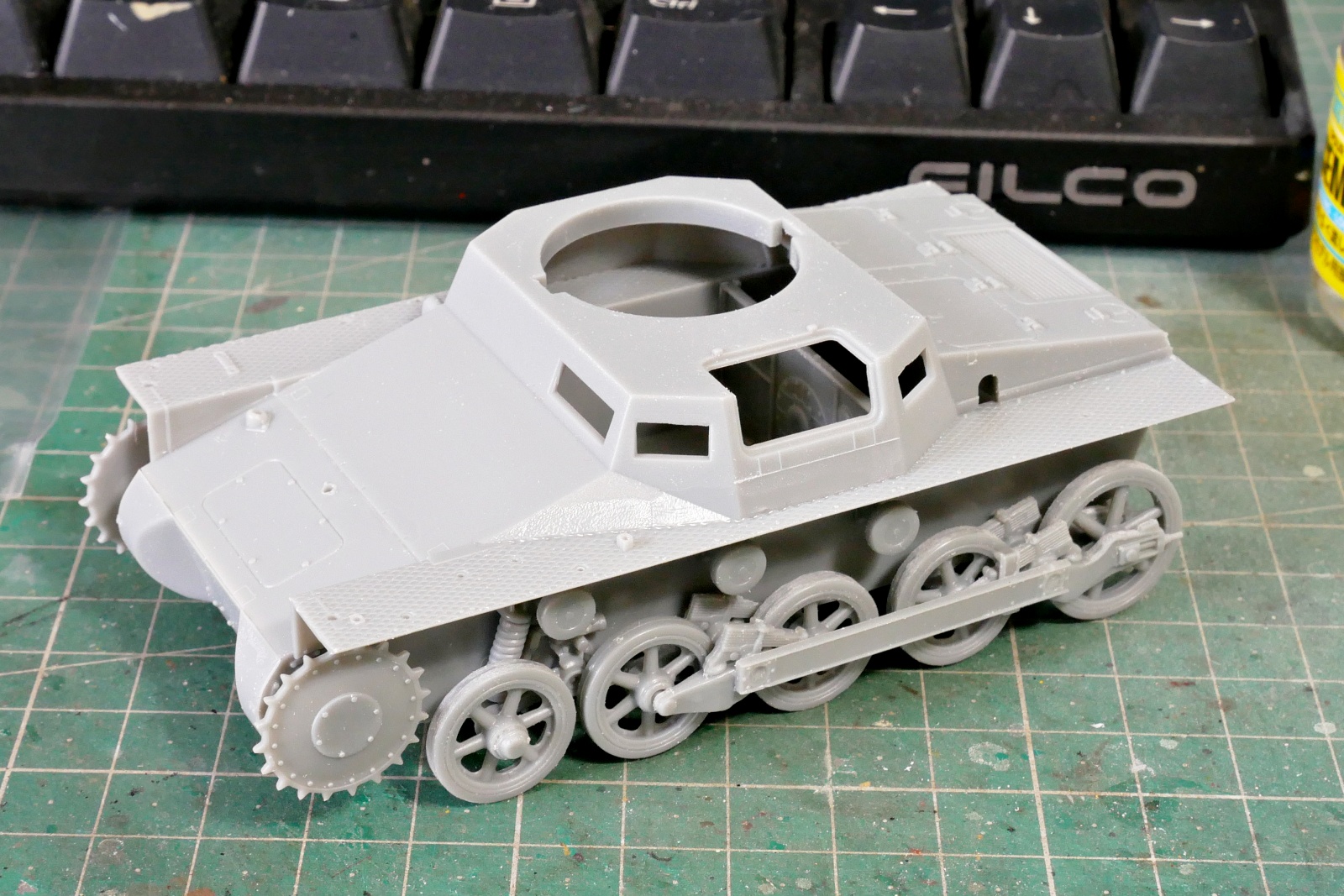
I haven’t installed the OVM and hatch on the tank yet, but the mold is fine and nice. Fender mesh mold, etc.
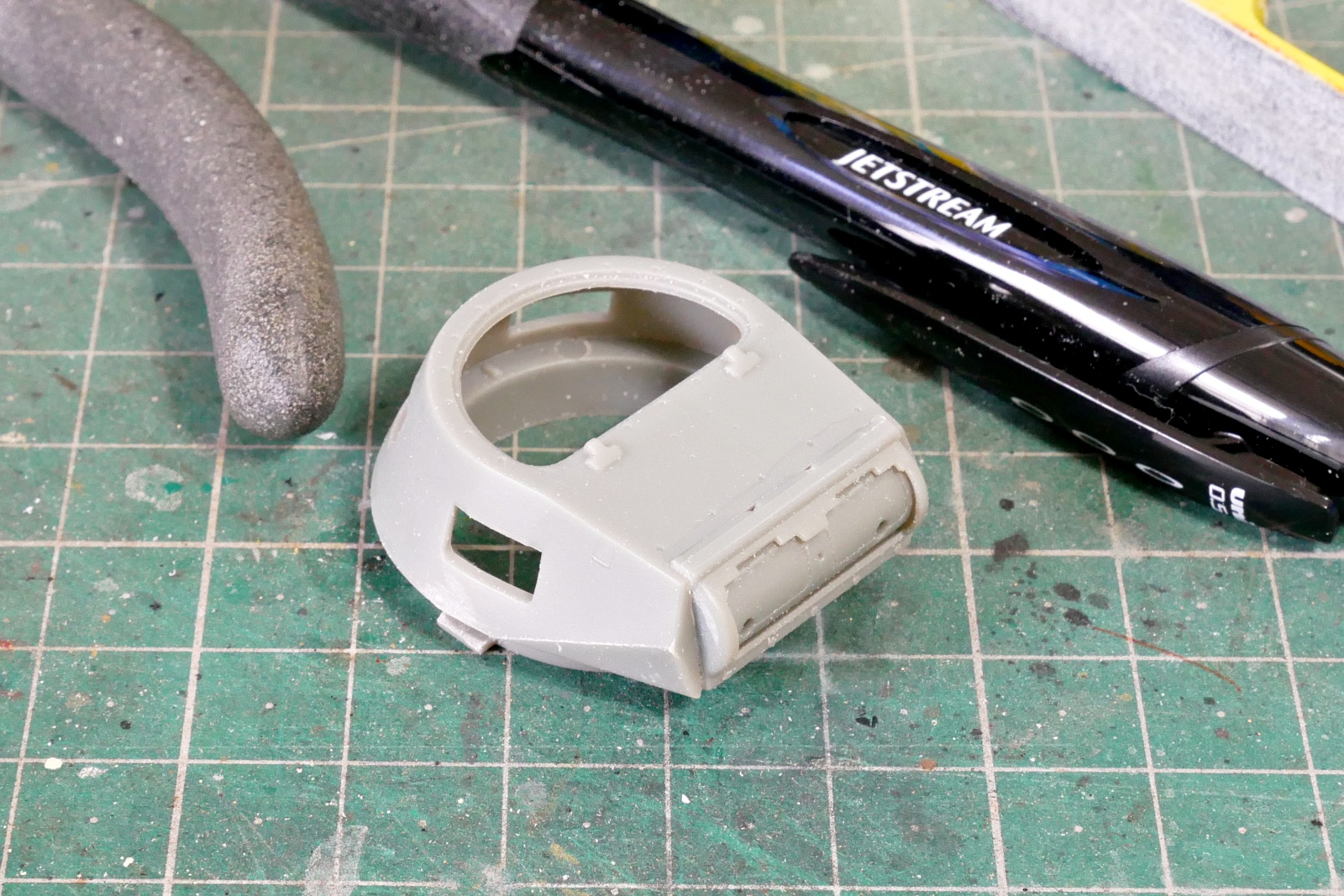
This is the turret of Panzer I. It is very small compared to a ballpoint pen. If you use a low viscosity plastic adhesive, it will get into the moving part of the turret, so I think a normal viscosity adhesive is more suitable.
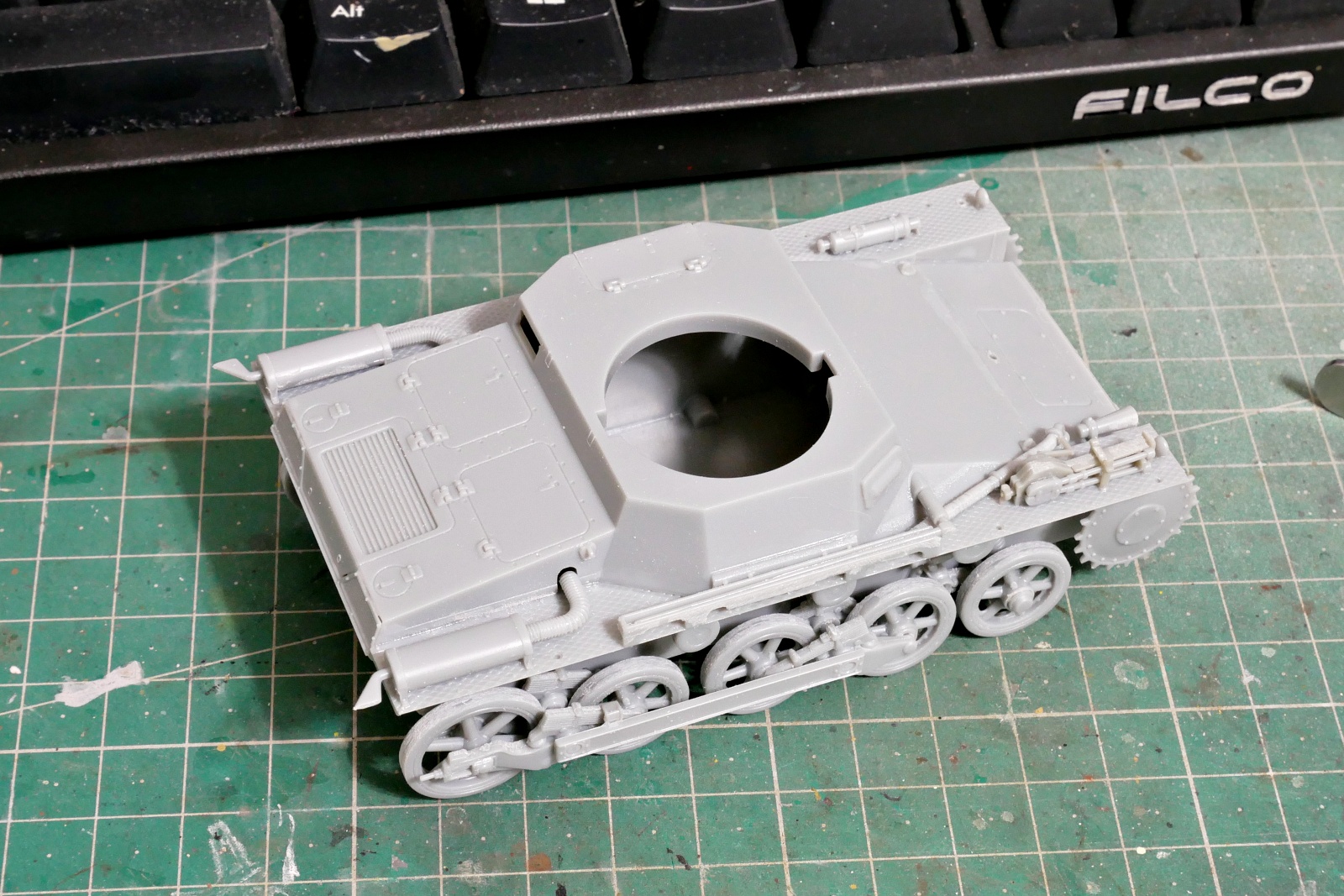
Jack and fire extinguisher? The muffler and antenna case are attached and the assembly is gradually progressing.
(2025/07/15)
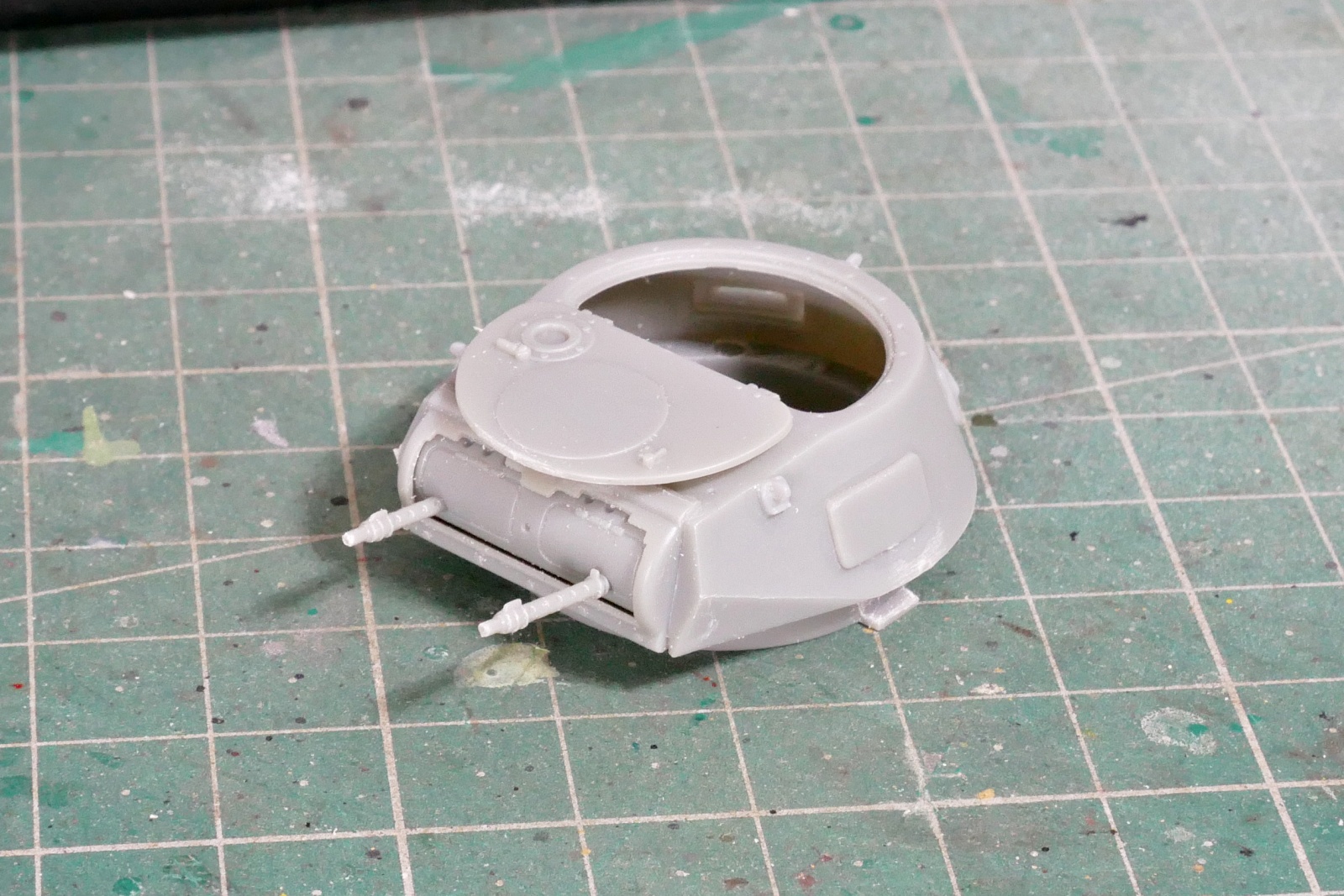
The tank I has a small turret and only machine guns. It’s like this. It’s a tank, but it doesn’t have any anti-tank capability. Panzerkampfwagen I was originally developed as a “training tank” for purposes of training and maintenance of mechanized units, so it’s only armed with two 7.92mm machine guns. It was a product of the early stages of German rearmament in the mid-1930s, so it was never intended to be “We’re gonna do some serious tank fighting!.” But they were used in the Spanish Civil War and the invasion of Poland, and of course they couldn’t compete with the full-scale tanks of other countries (like the T-26 and BT tanks) The German army also realized, “This is serious,” and it was a trend to rapidly release the following tanks, II, III, and IV. Its turret can be turned by separate parts, and its use of the leaf spring system provide the foundation for future German tank designs.

According to the article on Tank I in the Achtung Panzer 7 at hand, it was explained that the intake and exhaust armour cover was approved in July 1937 to compensate for the weak armour around the engine. The kit also comes with optional parts, so I decided to attach it. At the time of the Battle of Poland in September 1939, there must have been quite a few tanks like this.
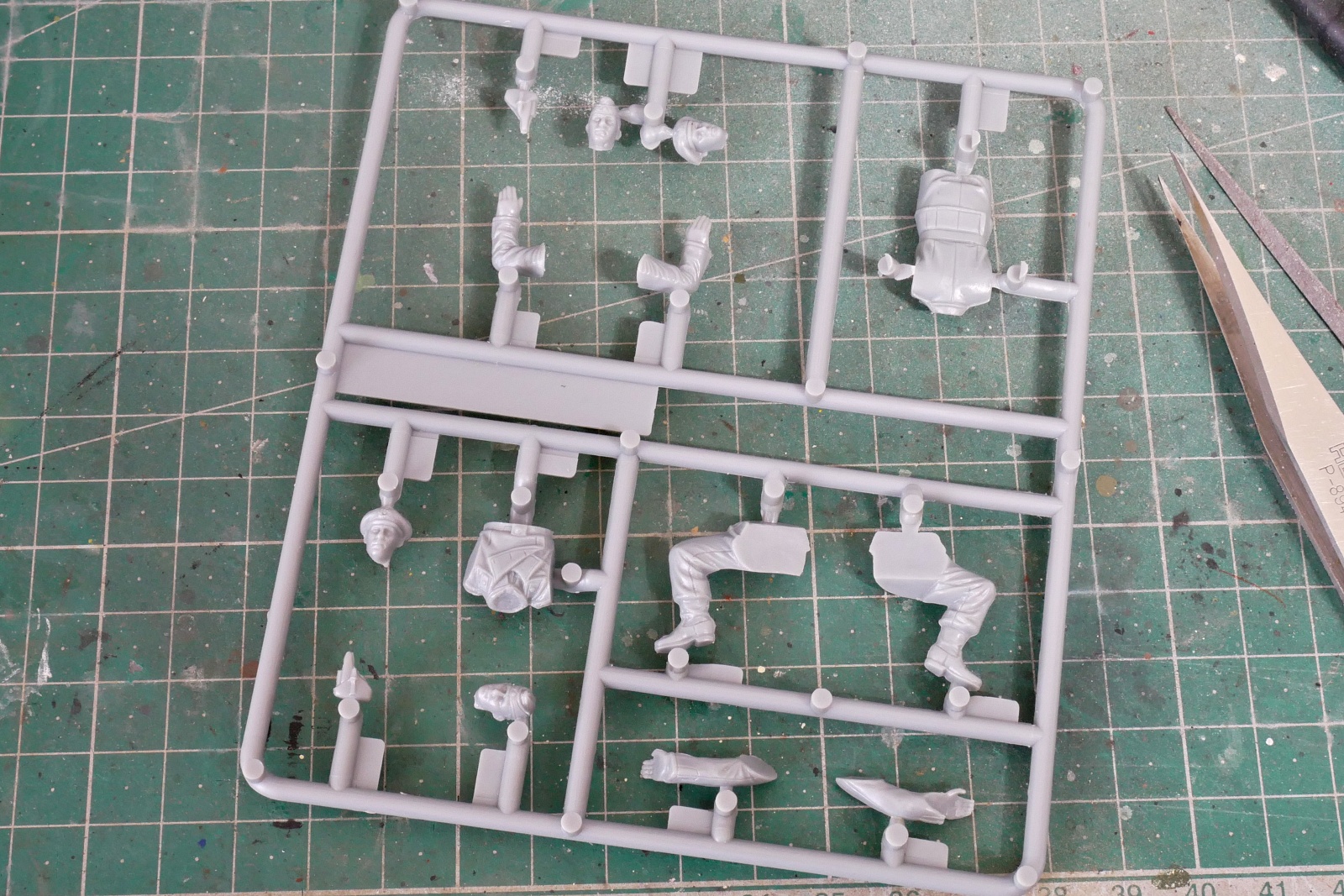
The kit came with two pretty accurate figures. Because the tank is small, when I put two figures on it, it doesn’t just look like an accessory, it looks like another main character. It is very good because it was made by Mr. Yoshitaka Hirano, a figure sculptor. Their facial features are unique, and the wrinkles in their uniforms and the texture of their equipment are unobtrusive. They’re wearing the Panzer berets of the early tanks of the German elite, and they’re going to be a good match for the Polish war vehicles. Like the real one, the core of the inner cap has been reproduced, and I think it feels a little stiff. This helmet, which was common until the French game, was eventually replaced with a simplified field cap.
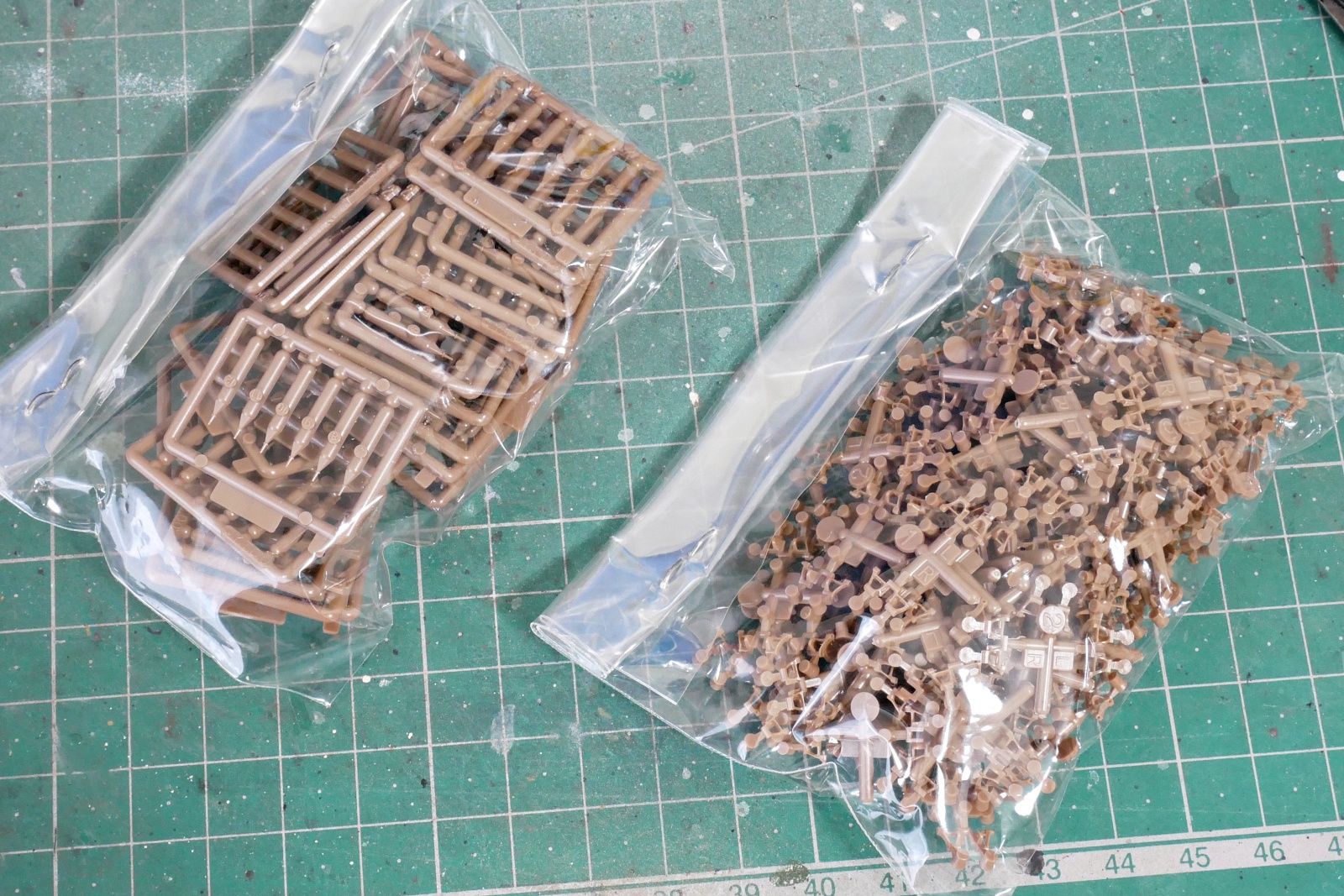
I don’t really know, but I think that the connecting track of this kit 003 is not just a plastic connection, but a Modelkasten SK-70 movable track is used as it is. It’s rare to have a structure where one side is inserted and the other side is inserted. It has excellent mobility and texture, and is very satisfying when assembled. The fact that we can enjoy high-quality third party parts is the highlight of Trystar.

Depending on the parts, it’s easier to shape them neatly with a nipper, or it’s better to cut from the top with a design knife. It is easy to make if the parts are accurate even though they are small.
(2025/07/19)
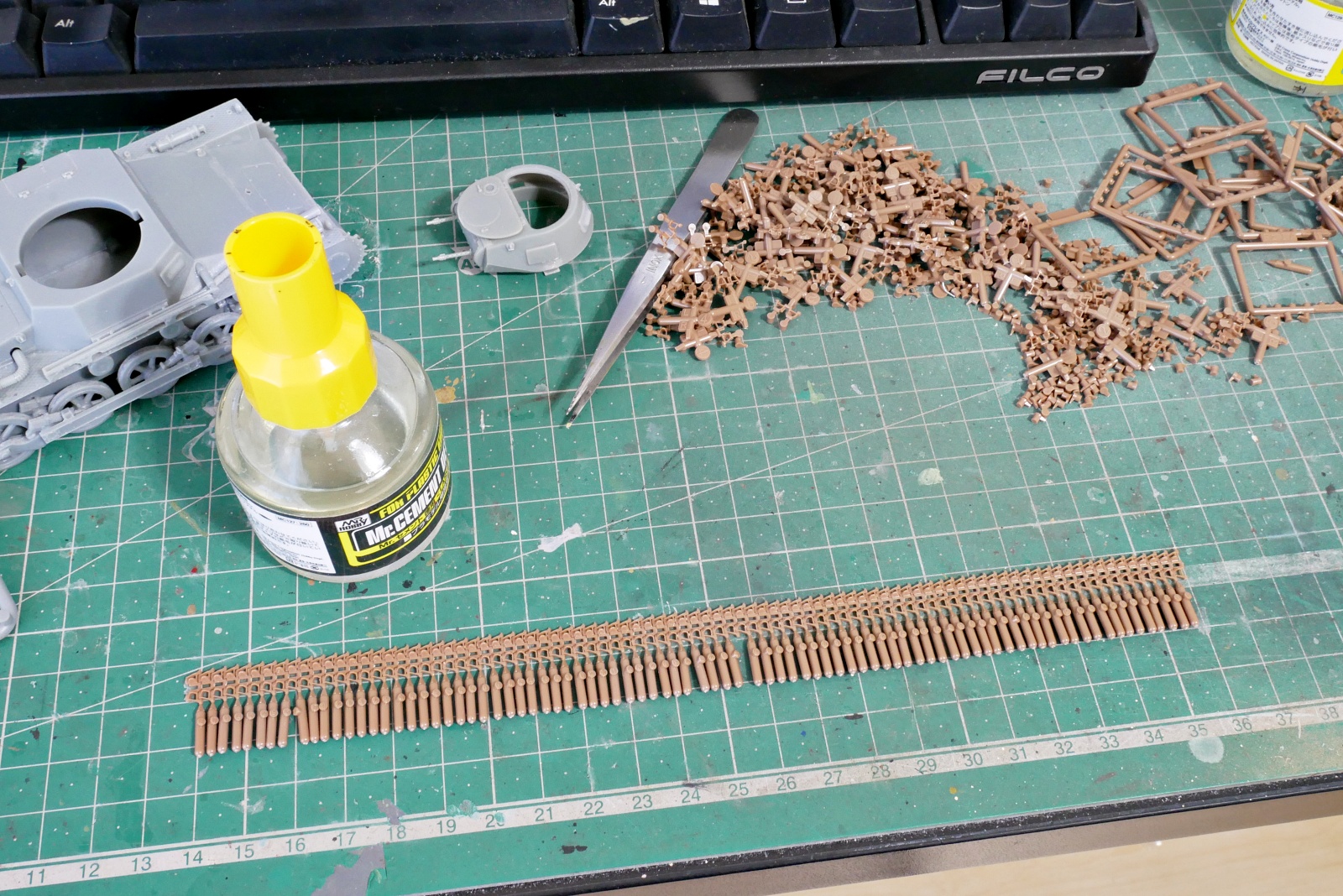
This track part has a right and a left, and it is designed so that when the pin is inserted and cut, the one is inside. Finally, I fixed all of the track parts by using adhesive evenly so as not to move any more. However, if you use a strong pouring adhesive, the thin part will melt, so it may be safer to use plastic adhesive containing resin.

If it is an inset type connecting track, it may come off when it is assembled to the tank body, which is a stress, but if it is a type that adheres properly with a pin, it is troublesome to make, but it will not come off even if it is handled roughly afterwards, so I feel that the hard work is rewarded.
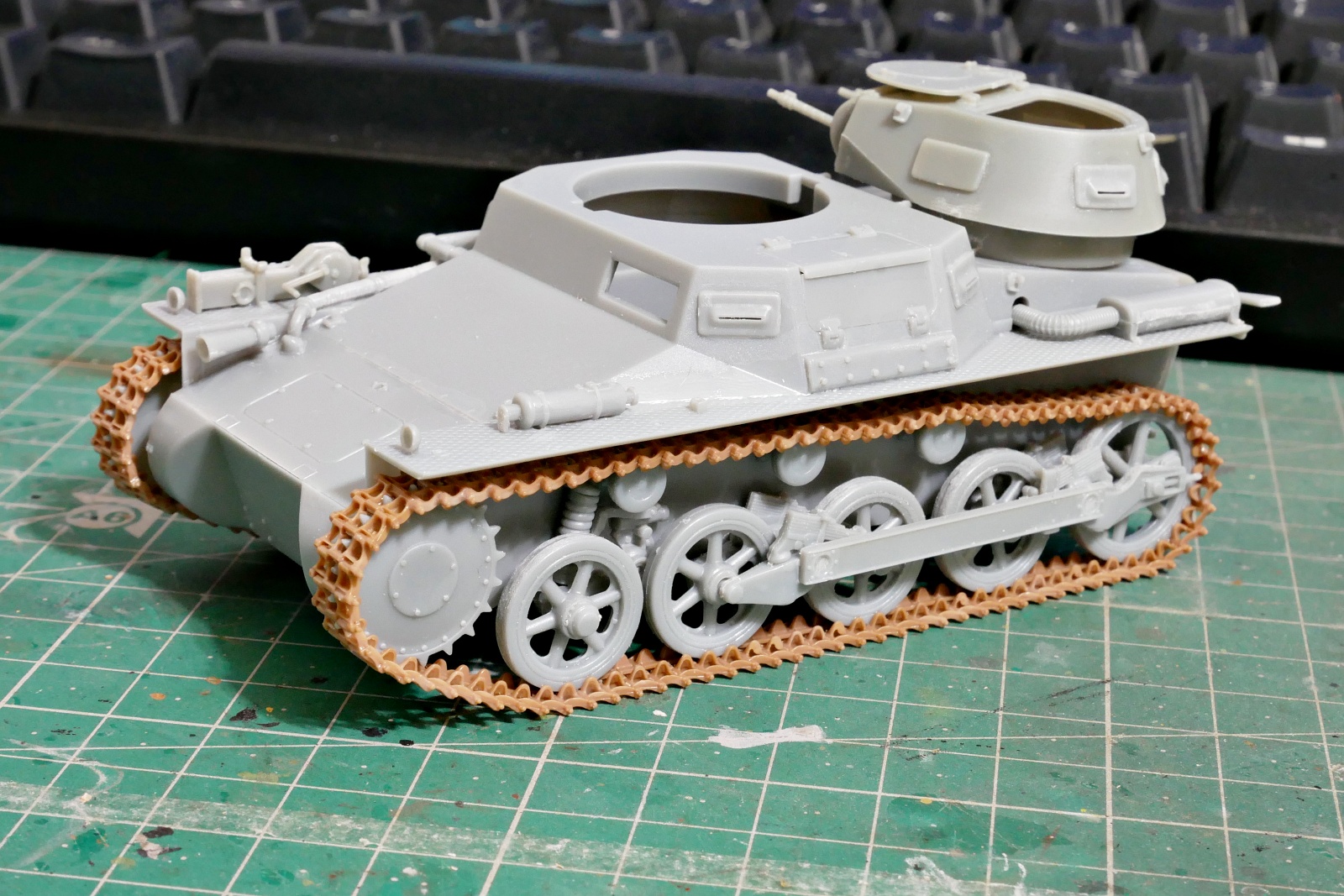
It fit nicely into the tank. The movable connecting track is excellent because it can express a slight slack between the upper rolling wheels and the feeling of weight of the tank is conveyed. Recent partially connected tracks have a well-formed mold.
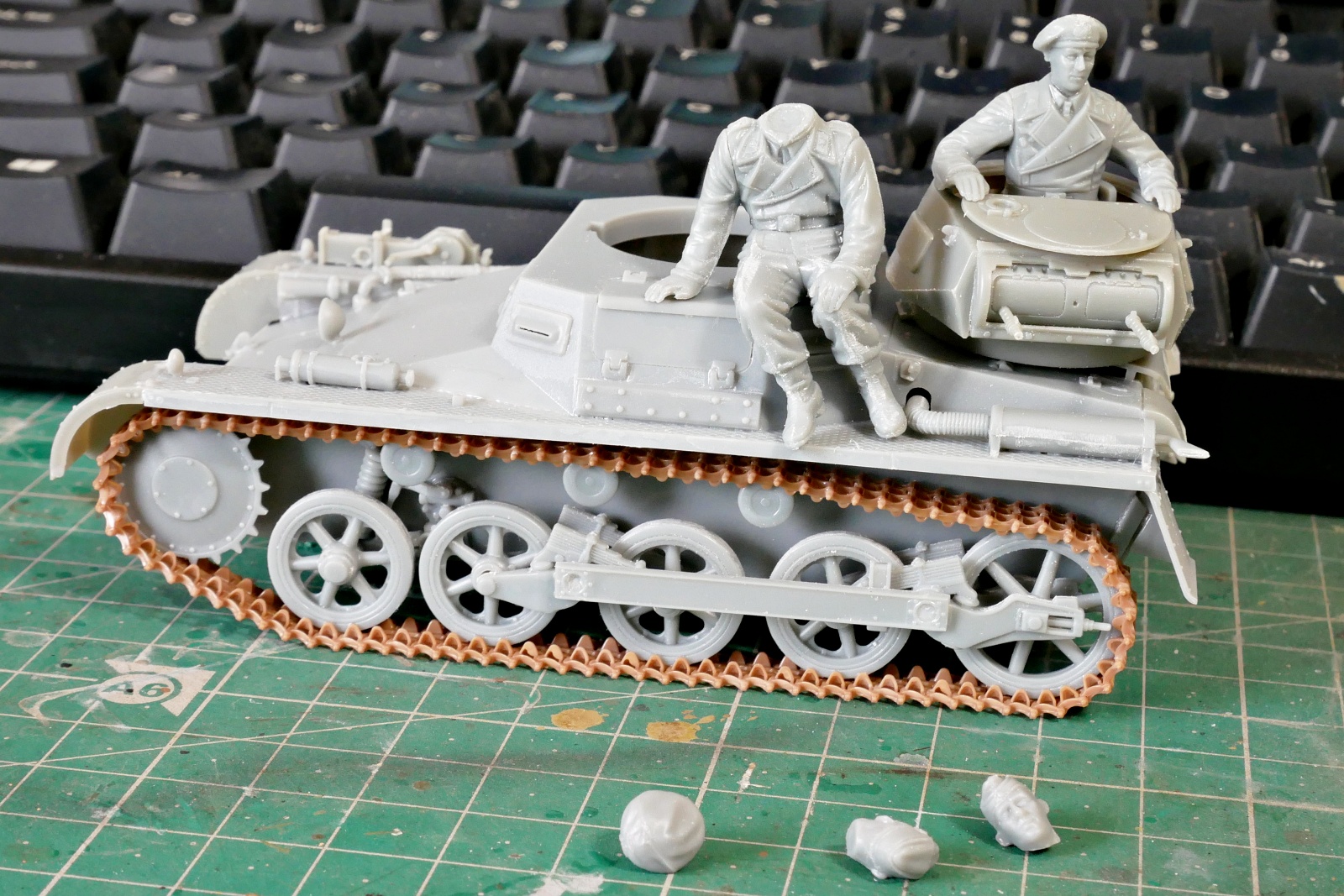
The figures are too big, or the vehicle is too small. With two tank soldiers on board, it looks much smaller, probably because it was developed as an agricultural tractor.
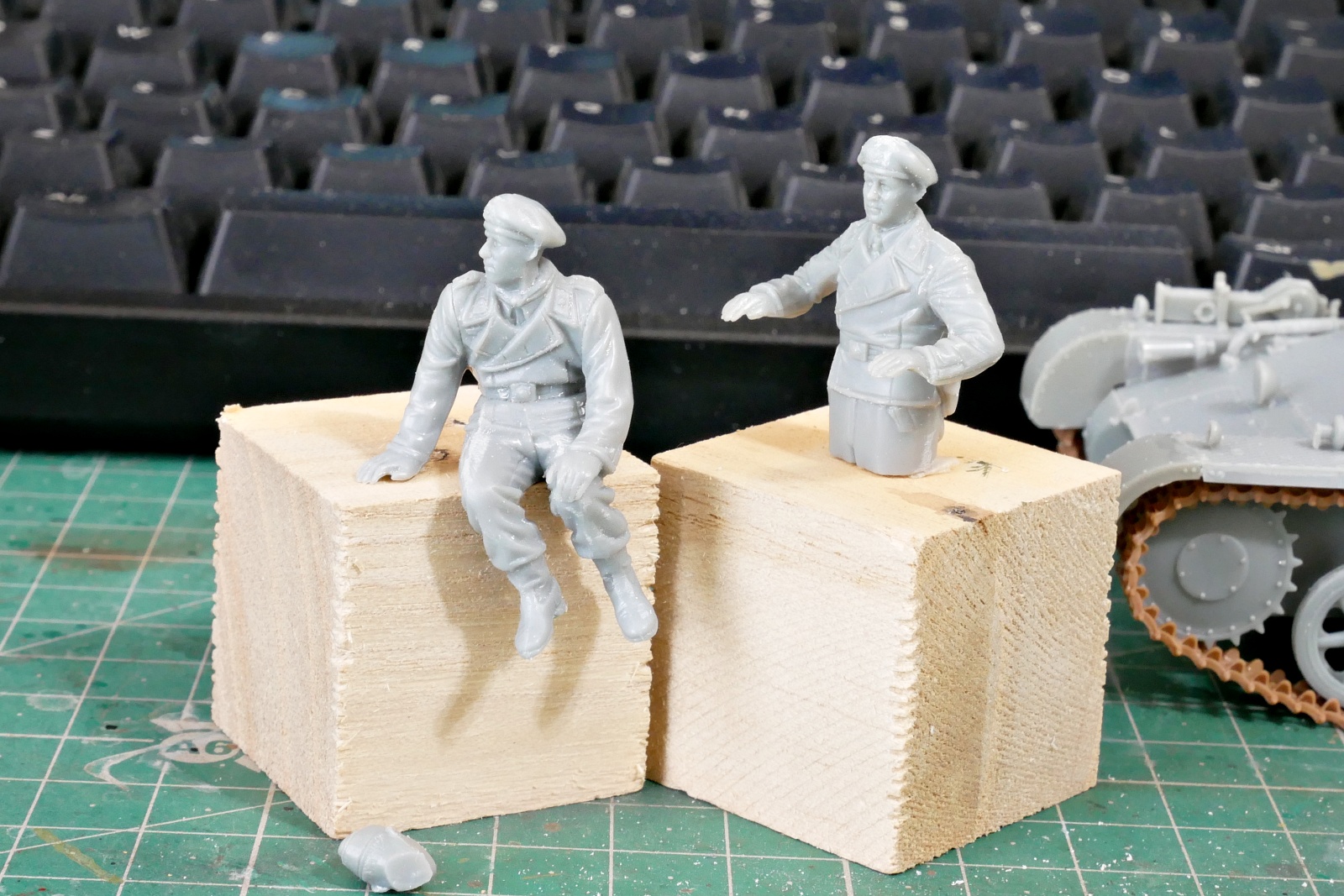
Most of the figures have been assembled and shaped, so they are in the stage of preparation for painting.
(2025/07/23)
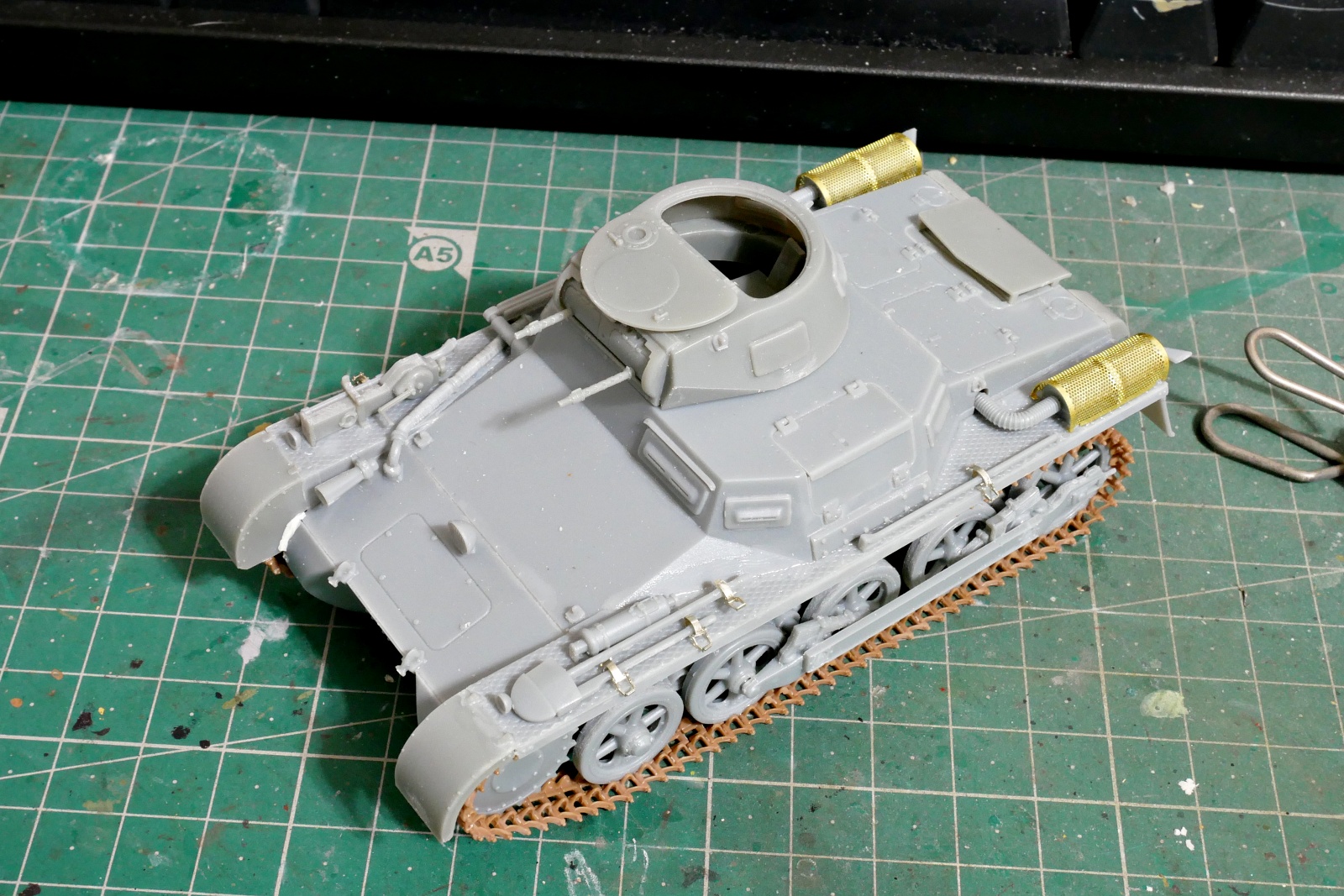
Assembly is complete after installing the etched parts such as the muffler cover. The muffler cover naturally curls up on a large eraser with a round and long file.

There were some fine OVMs, so I cut the mold and added clamps with the Aver etched parts. These days, there are many other types than Aver, so if you are interested in molding a kit, you should try some of them.
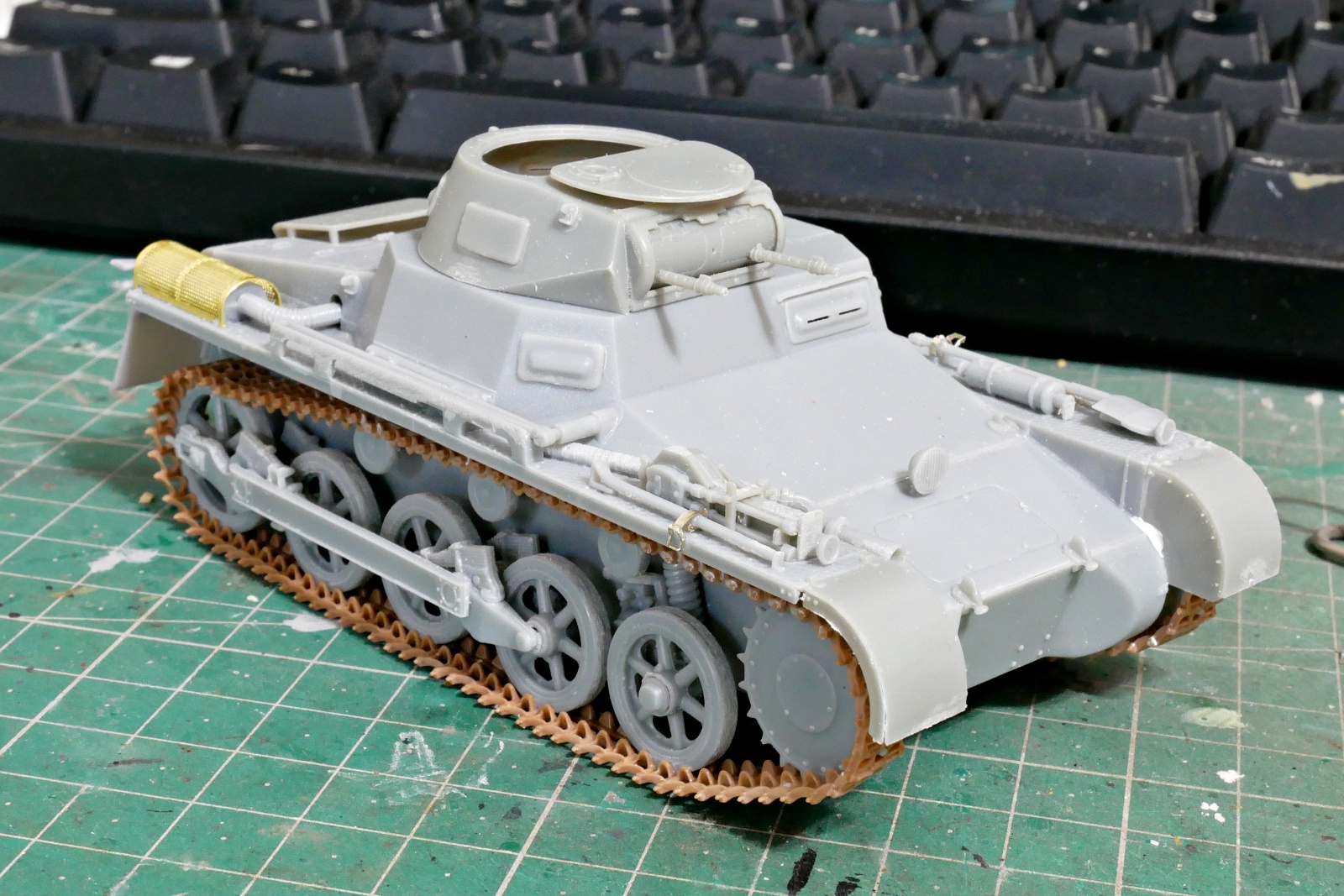
I have made additional work where I am concerned, such as opening a small opening at the end of the machine gun. I wonder about the headlights. I feel like I want to use clear parts, but it has a cover, so I guess I can leave it as it is.
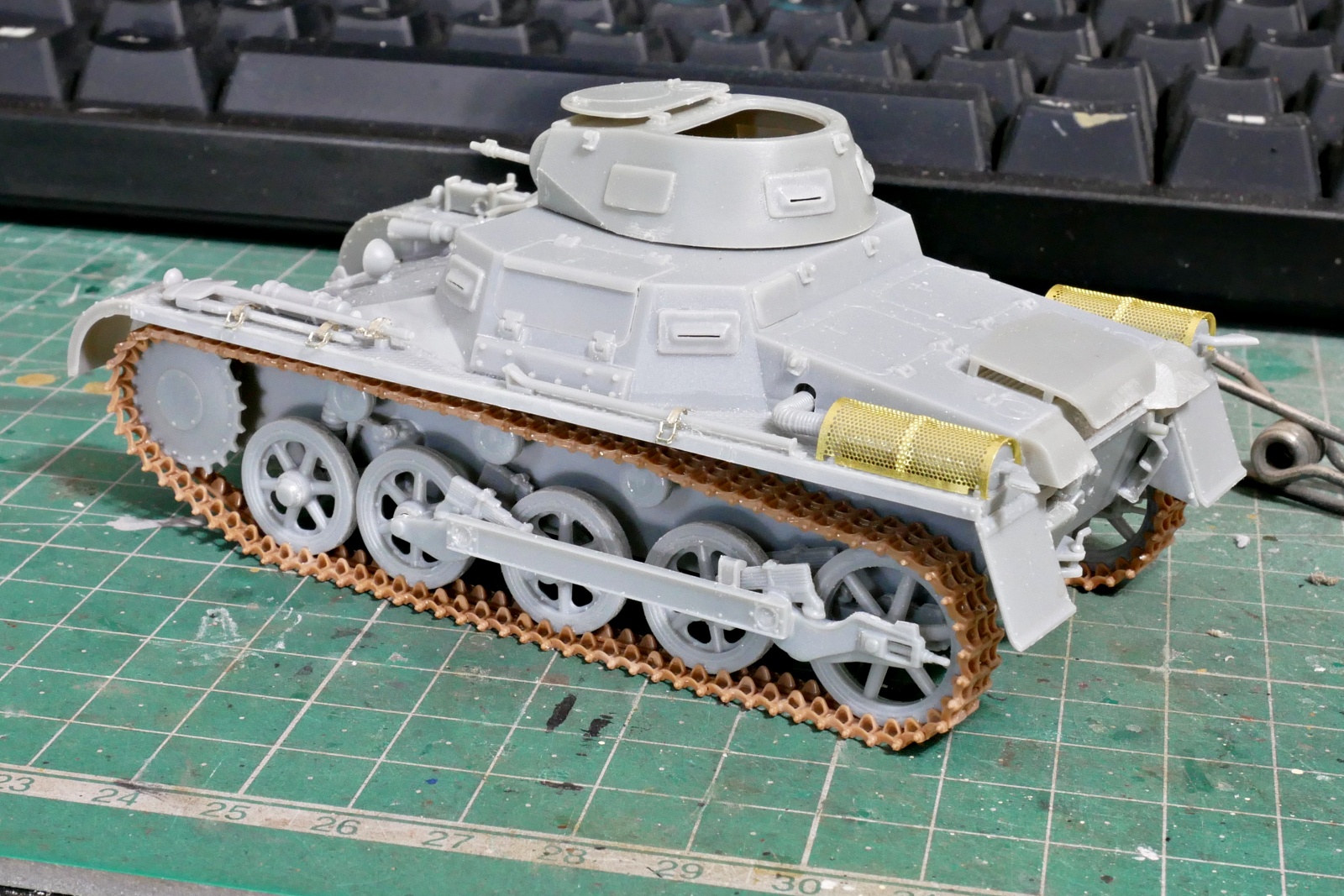
I think it’s better to put the turret on the body and check if it turns properly before painting. If you scrape a little, it will rotate smoothly.
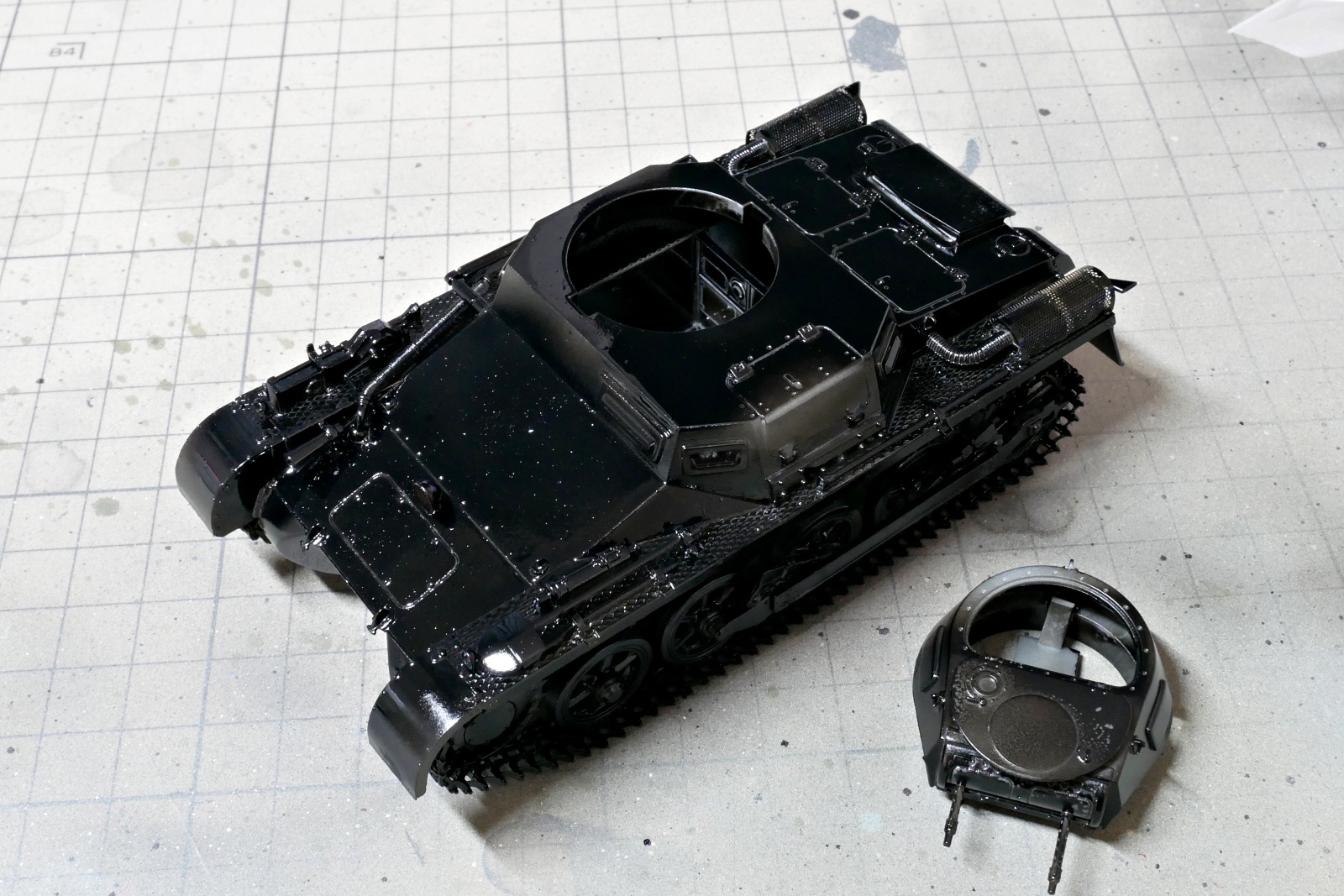
I primed it with black for now. As the color of German gray is dark from the beginning, there may be no problem to paint it directly. There’s a platform built into the turret to stabilize the figures, but I don’t think it’s very useful. It seemed to be better to bring the center of gravity to the hand just by tilting the figure forward.
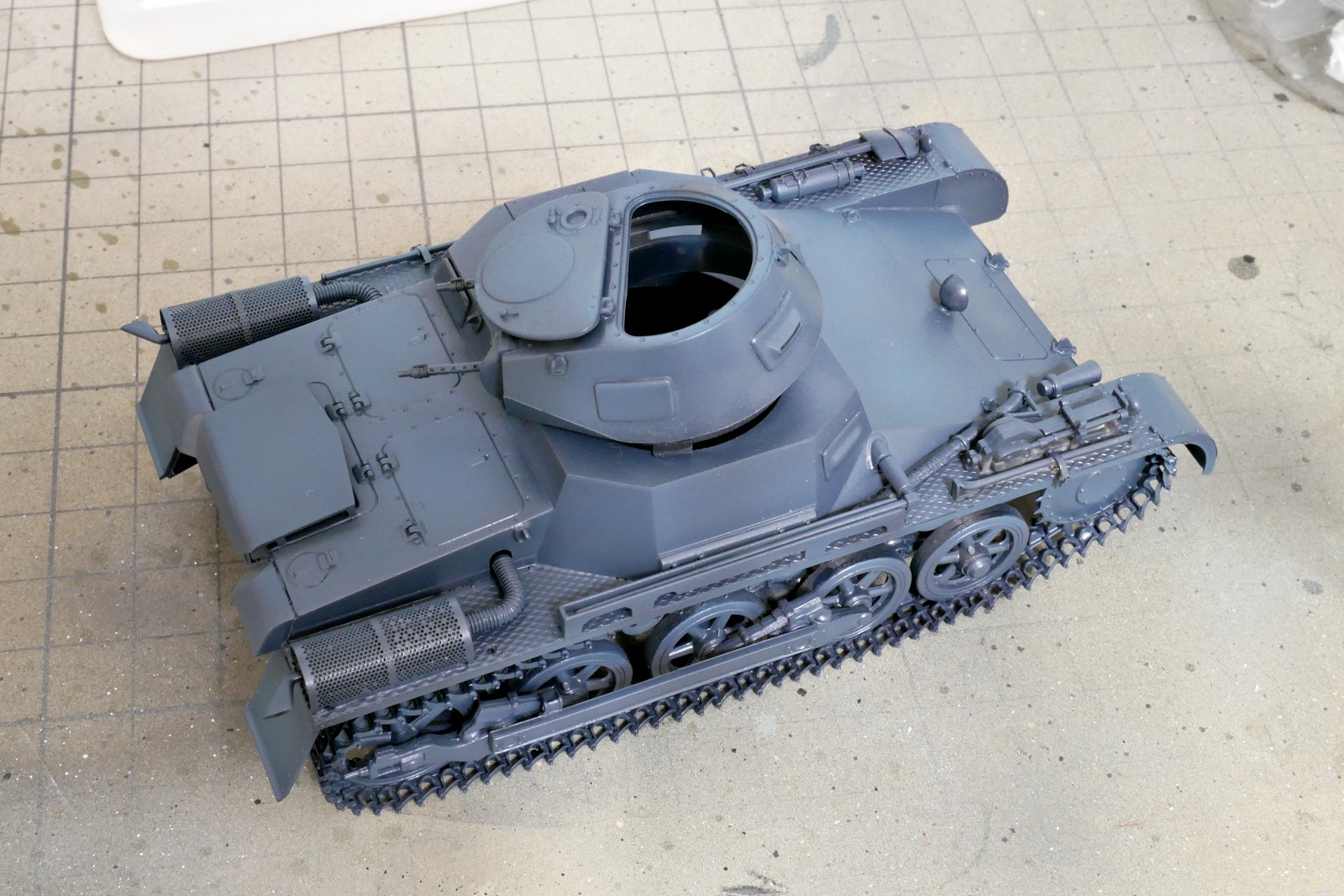
The picture is a little too bright, but the color is actually a little darker. I blew it with light and dark, but it doesn’t work well because the body is small. After that, I think I will attach the decals and start the detailed painting work.

I attached a decal for the use of the campaign in Poland. I don’t know if it is because it is a decal made by Cartograf, but even though it is more than 20 years old, there was no problem with color and film. Great decal.
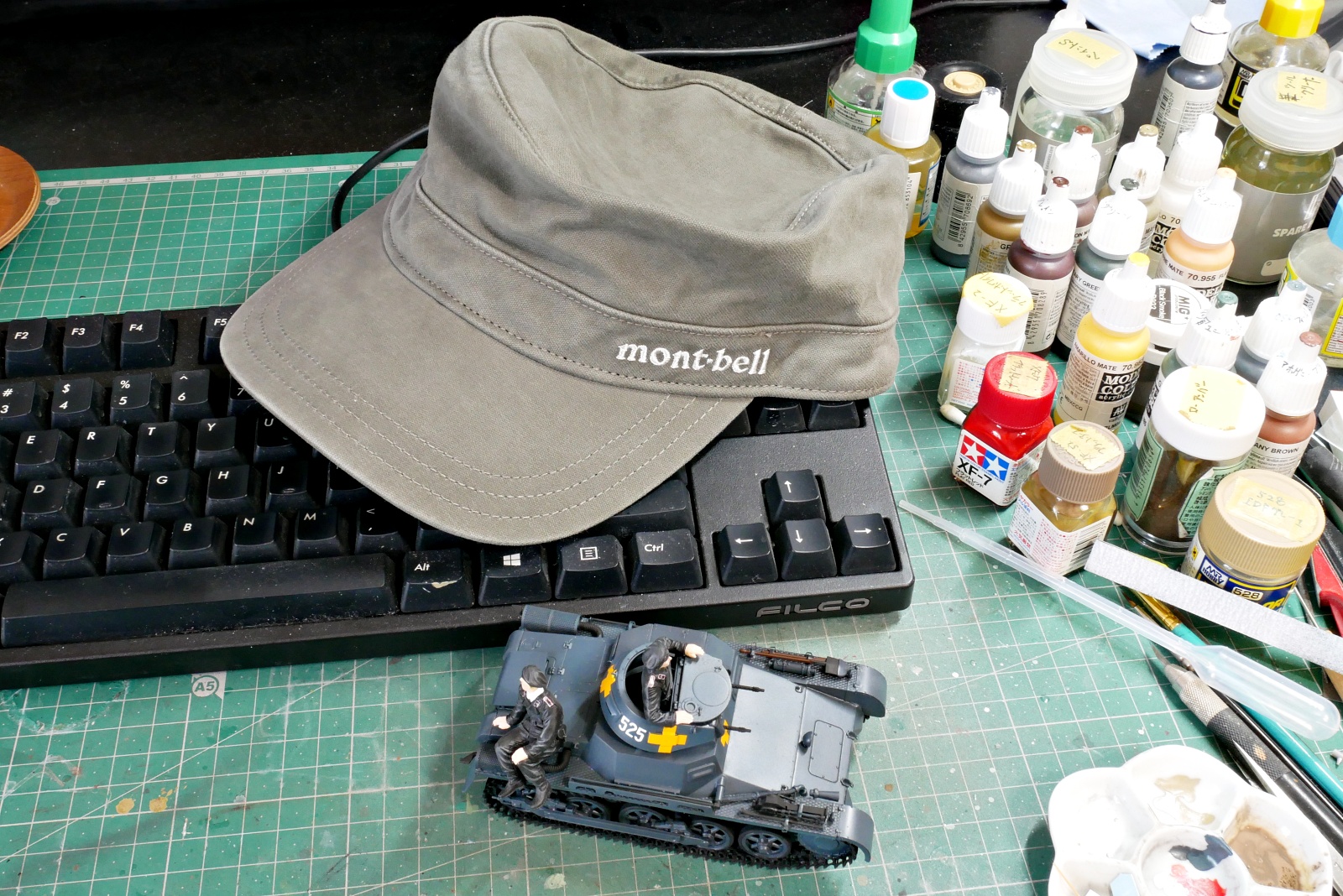
It seems that the extremely hot weather will continue for a while in Japan. I had something to do in Okachimachi, so I stopped by Mont-bell and bought a field cap. Mont-bell is a famous Japanese outdoor gear maker. This looks like a German tank crew cap. Hmm… maybe the German tank modeler gene was unconsciously activated. I also bought a pair of TEVA sandals. I hope I can ease the hot summer. TEVA used to have the impression of “We’re an Israeli company! That’s awesome!” at the top of its homepage. Before I knew it, the image changed to that the Grand Canyon was the birthplace. If you think about it, it’s a natural consequence of a corporate strategy that says it’s better to be less Israeli because Israel is causing problems in Gaza, Iran, and countless other places.
(2025/07/26)
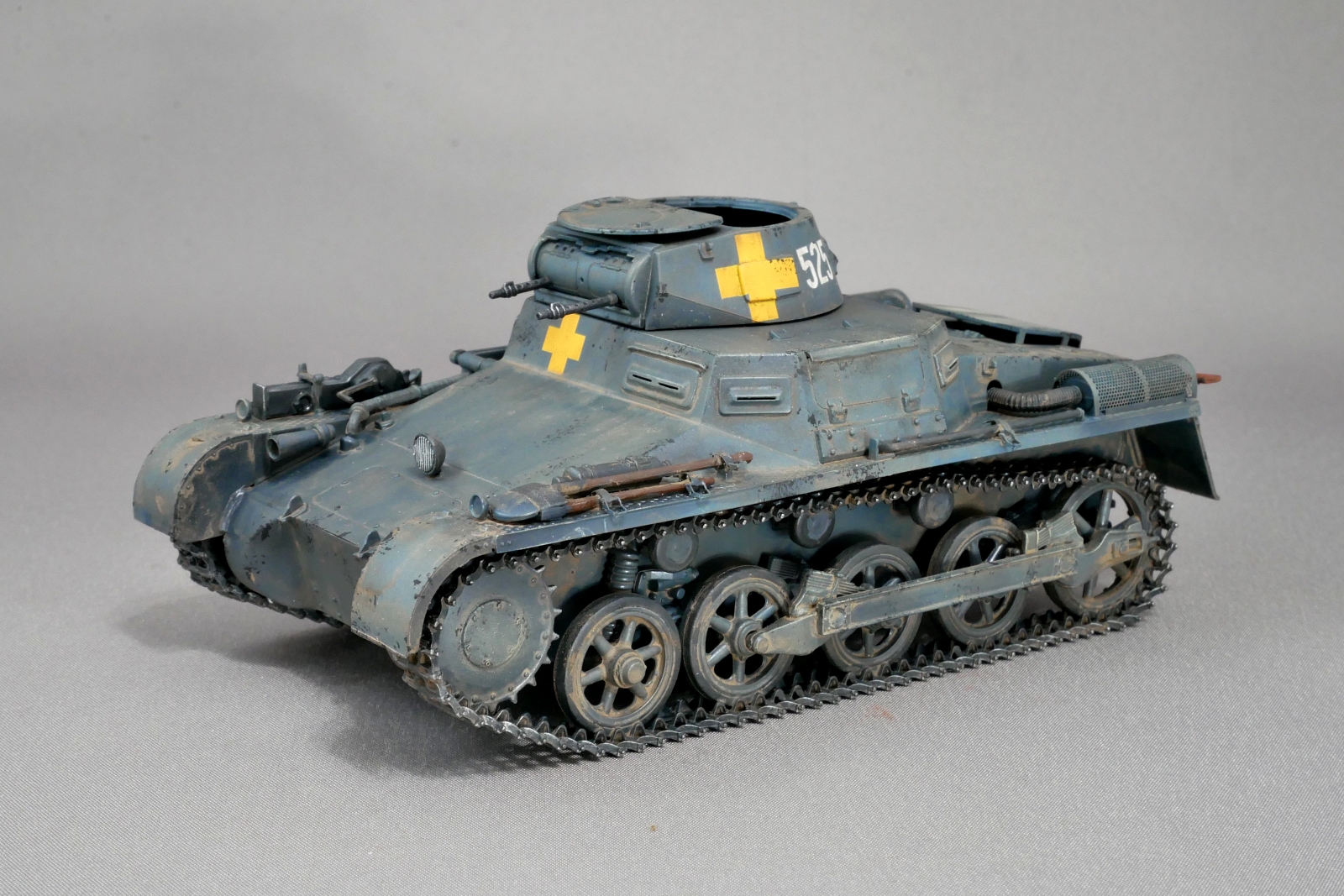
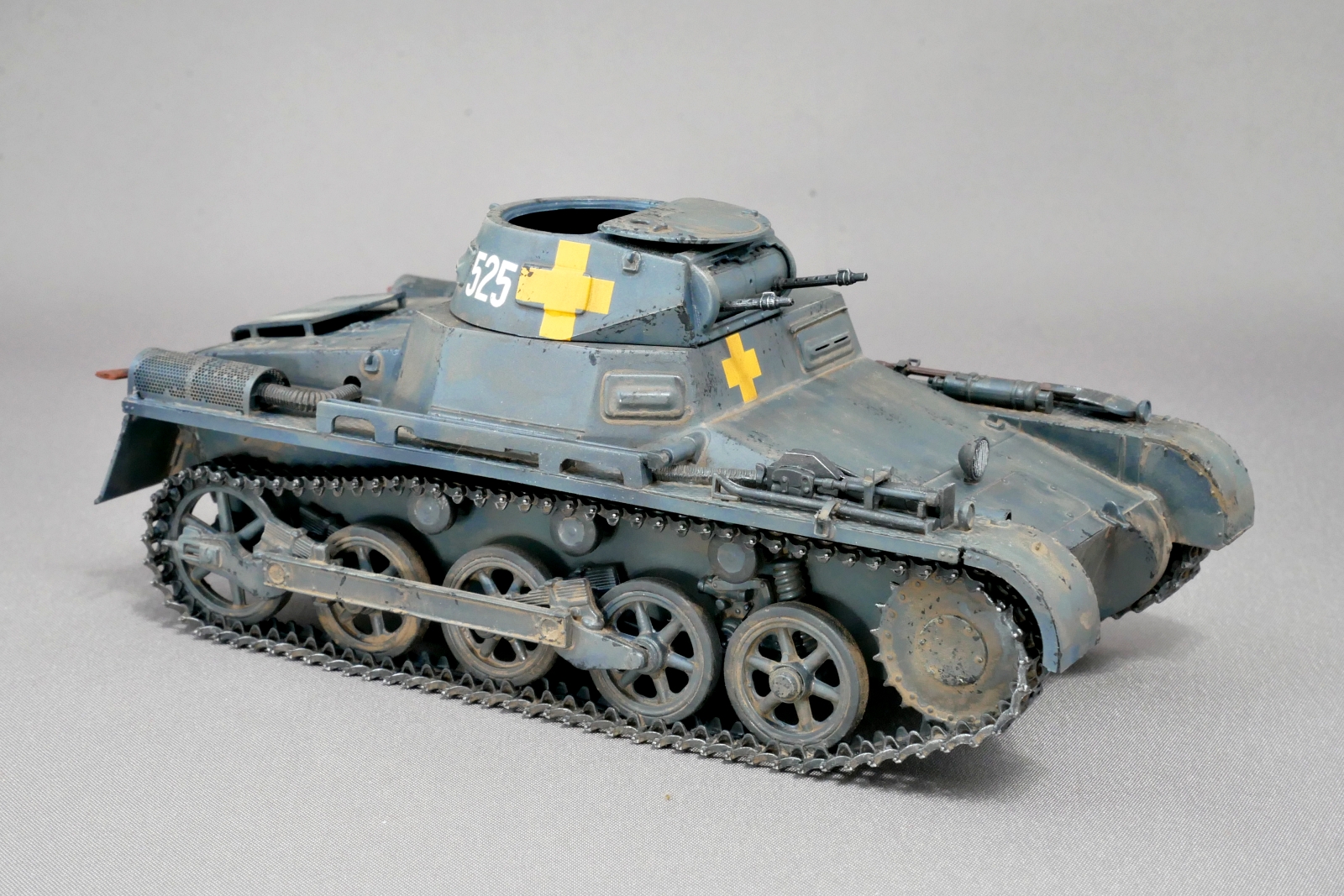
The Tristar tank Ausf I has been painted to the end. It is a single color German gray paint. There is also a faded version of German Grey color on the Cleos color, so I blow some of that paint.
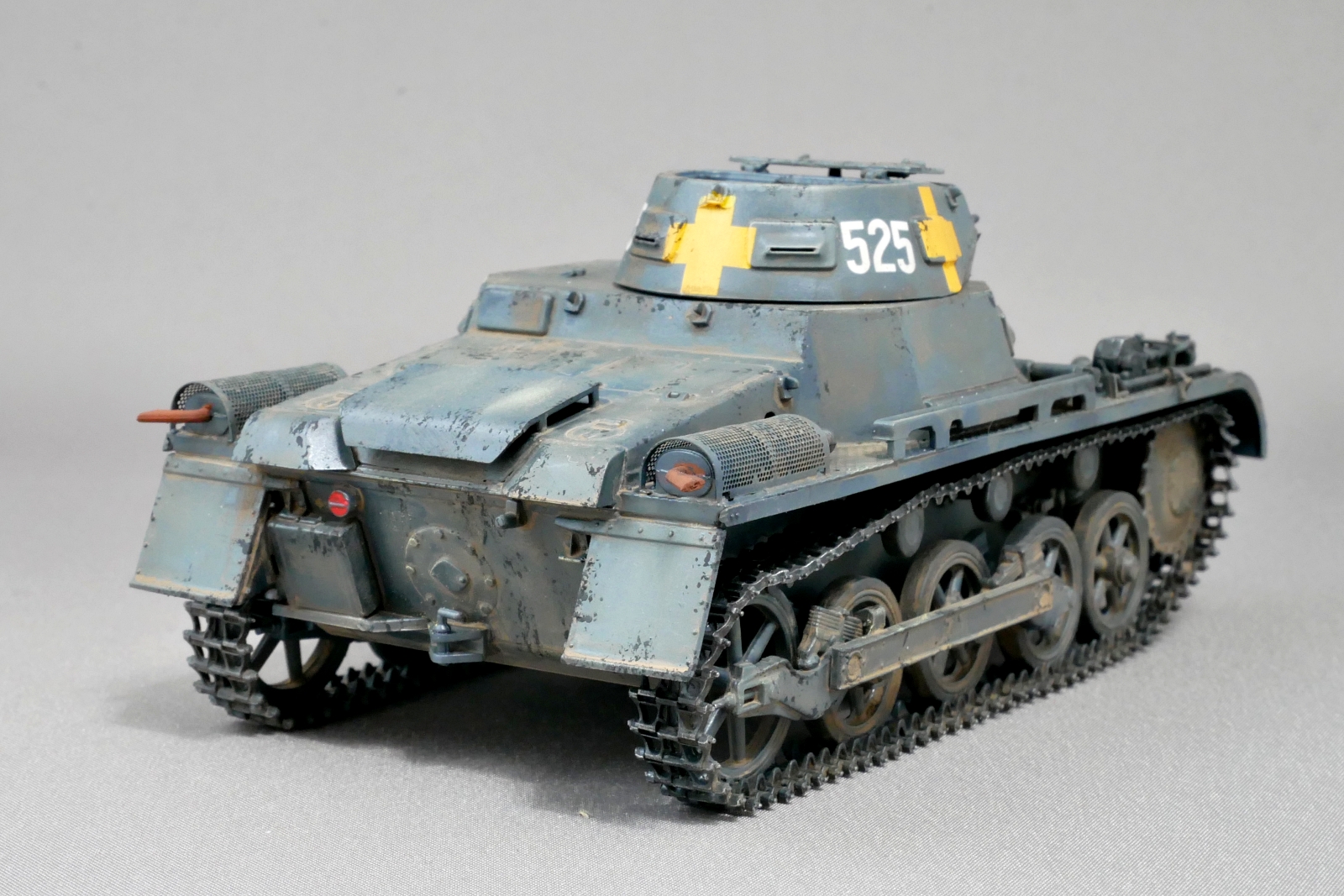

This time, the mark was made at the time of the invasion of Poland in 1939. At first, it was a white cross, but since it was easy to be targeted by enemy anti-tank guns, it was painted with a yellow cross. Really? Yellow is also noticeable enough and seems dangerous.
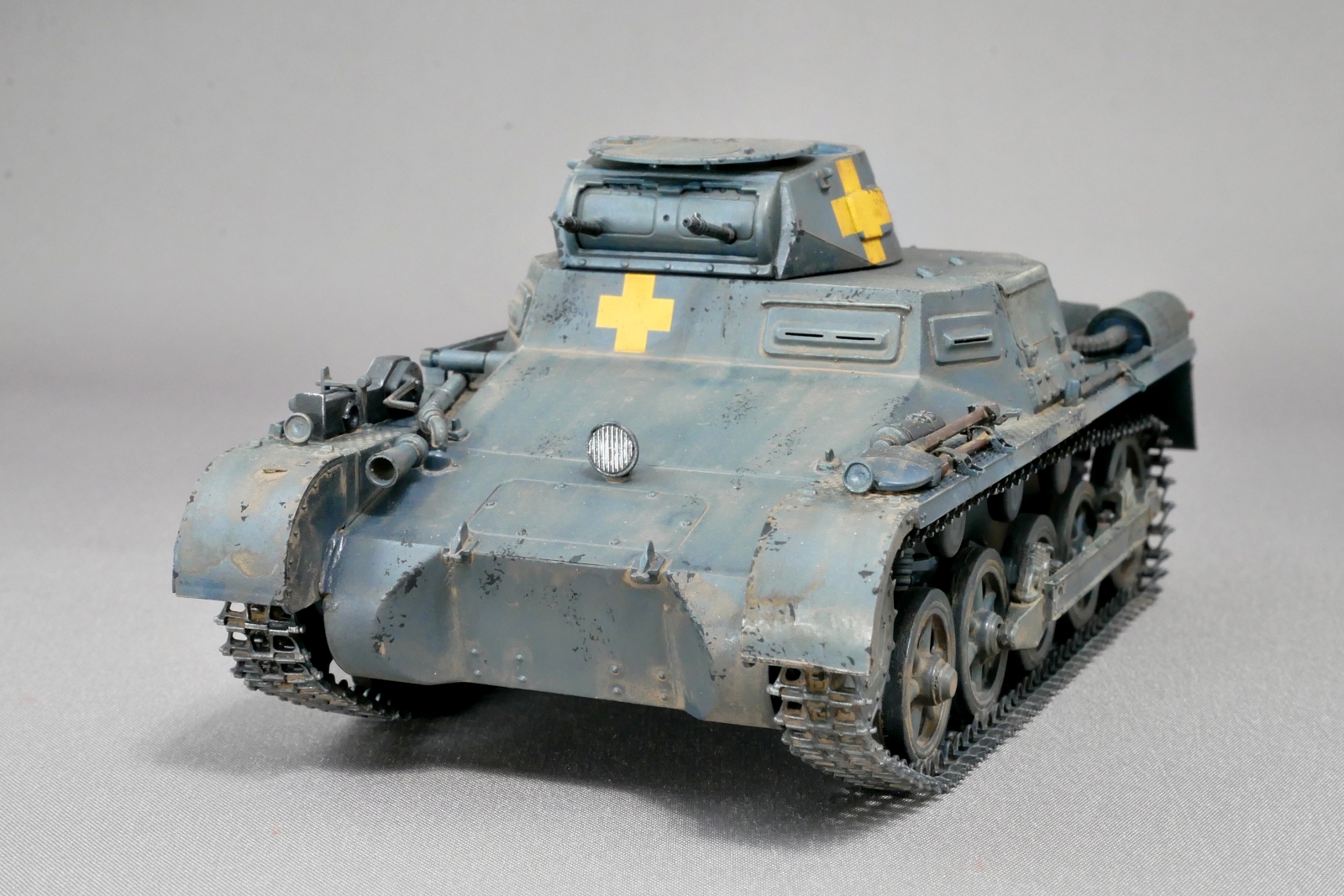
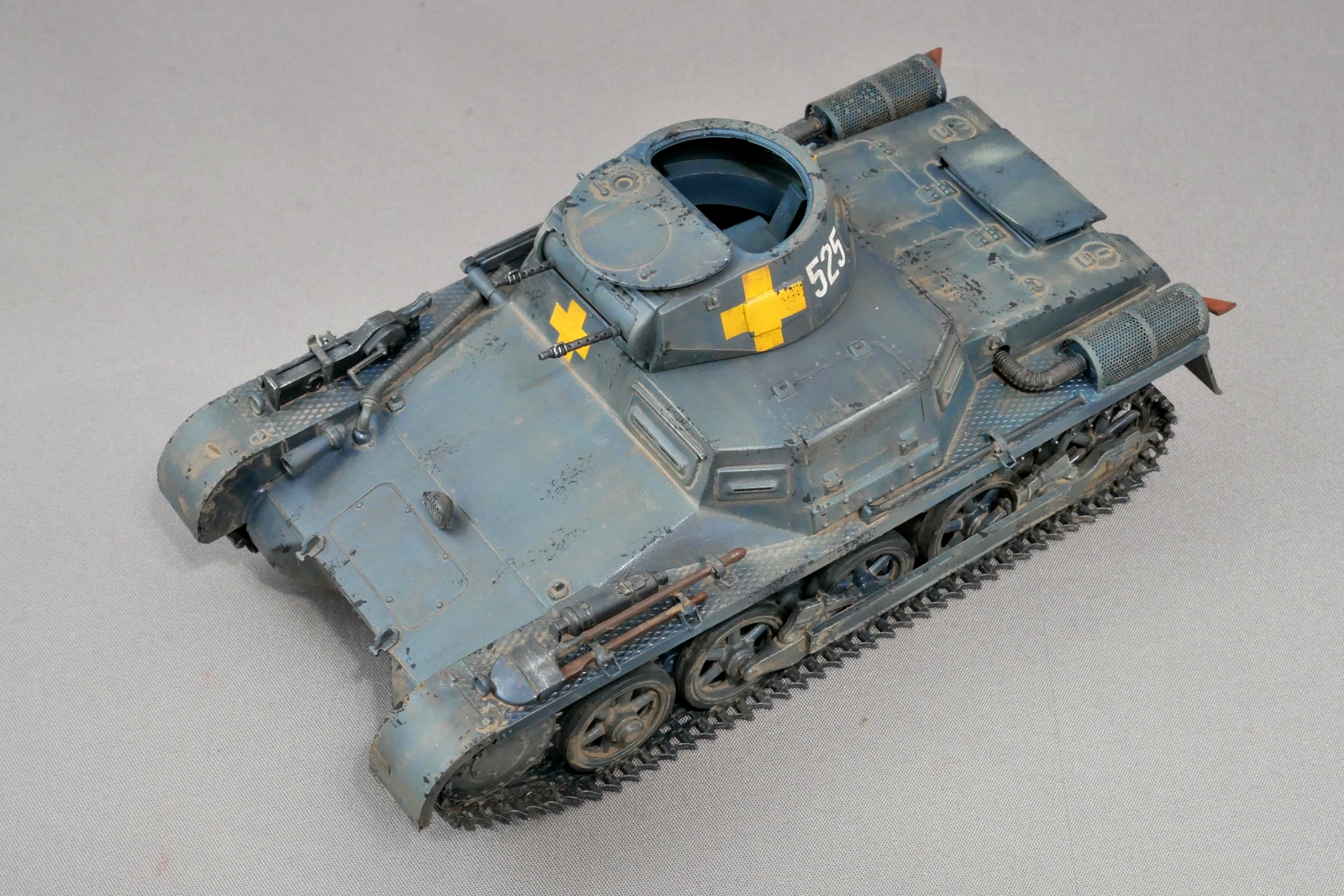
At the start of the war, they planned to fight with tanks III and IV in a solid formation, but they couldn’t get enough tanks, so they had to mobilize tanks I as well. It’s true that it only has a machine gun, so it looks pretty tough.
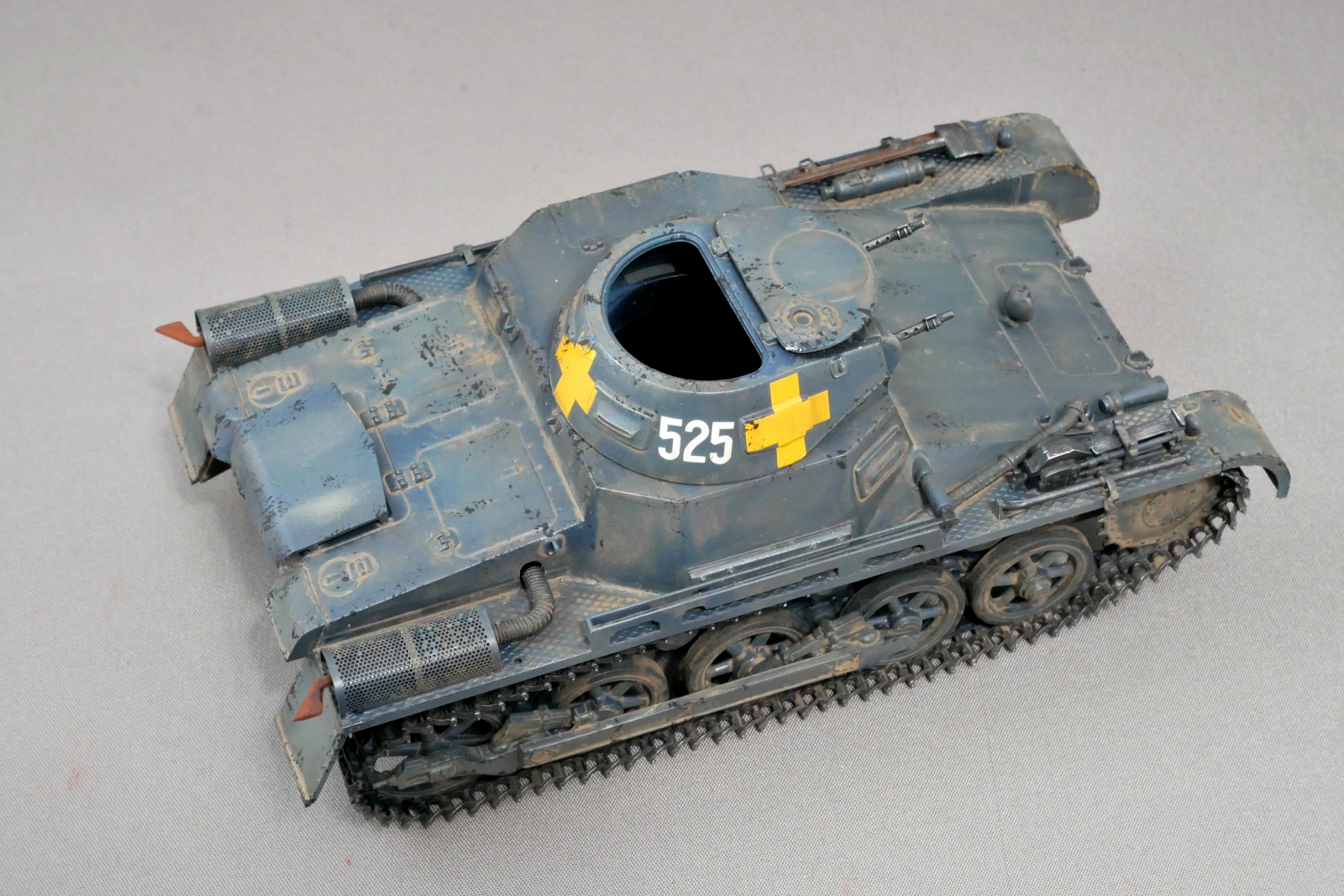

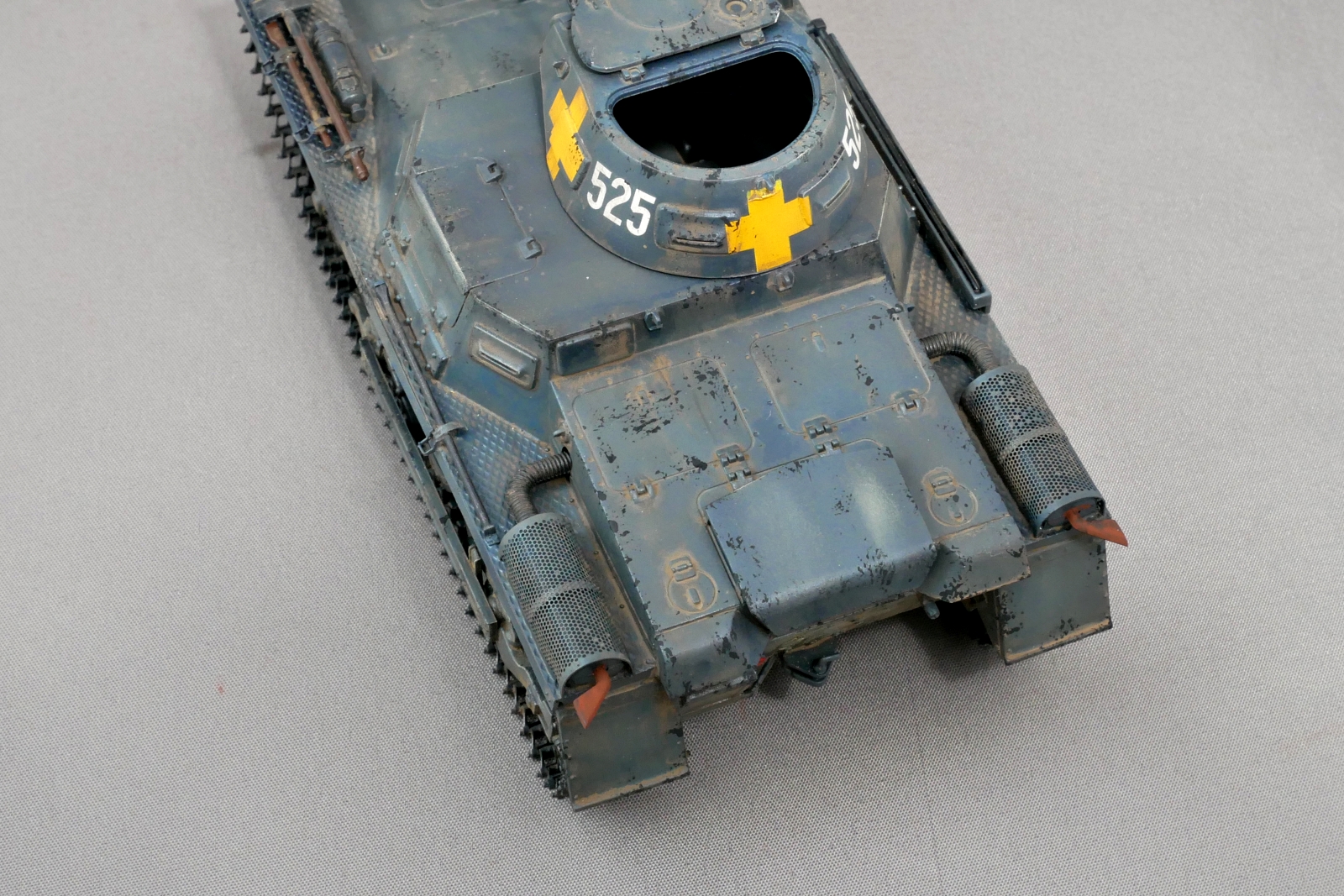
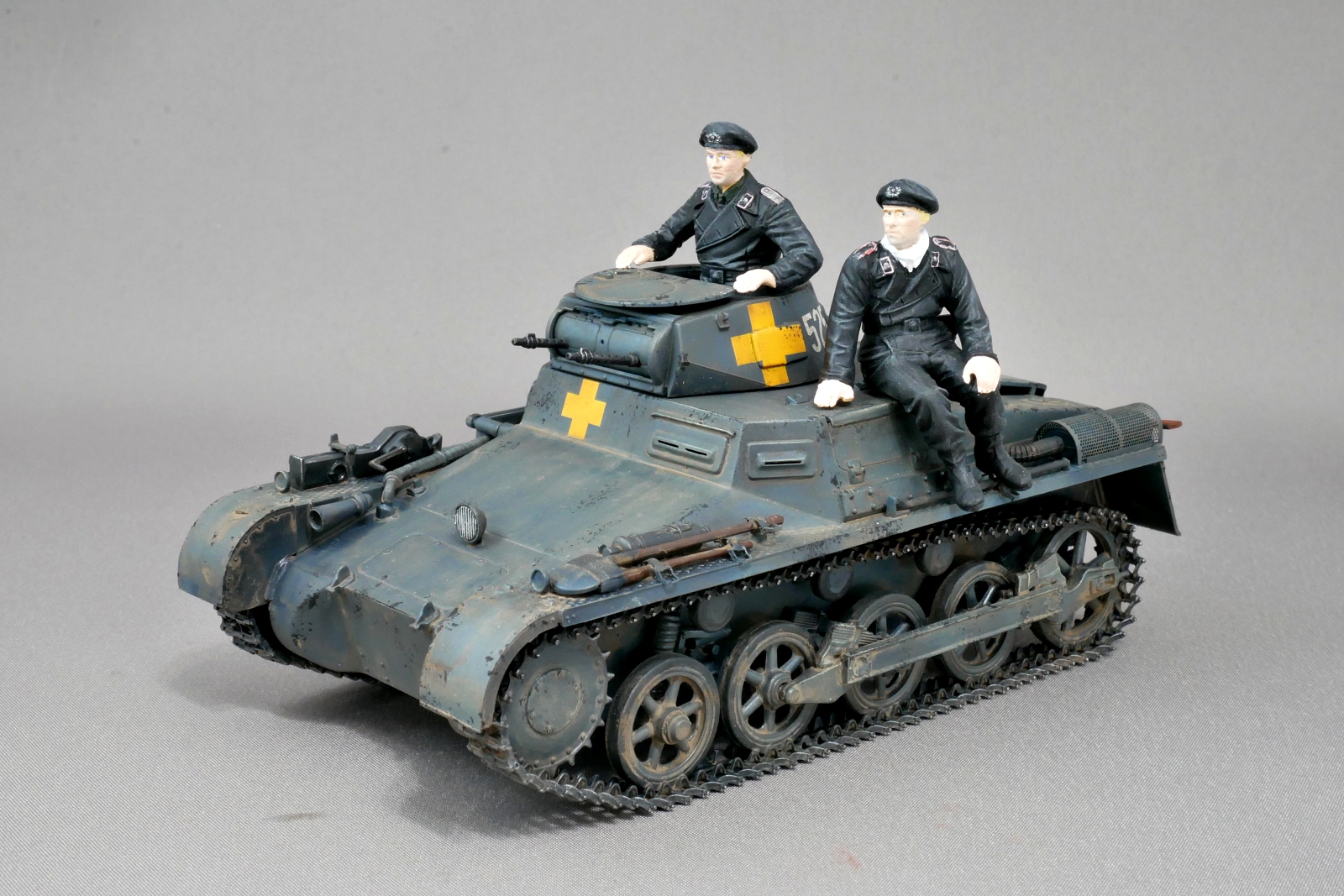
It came with two figures from the early days of German tank soldiers wearing beret helmets. The natural positioning goes well with the vehicle.

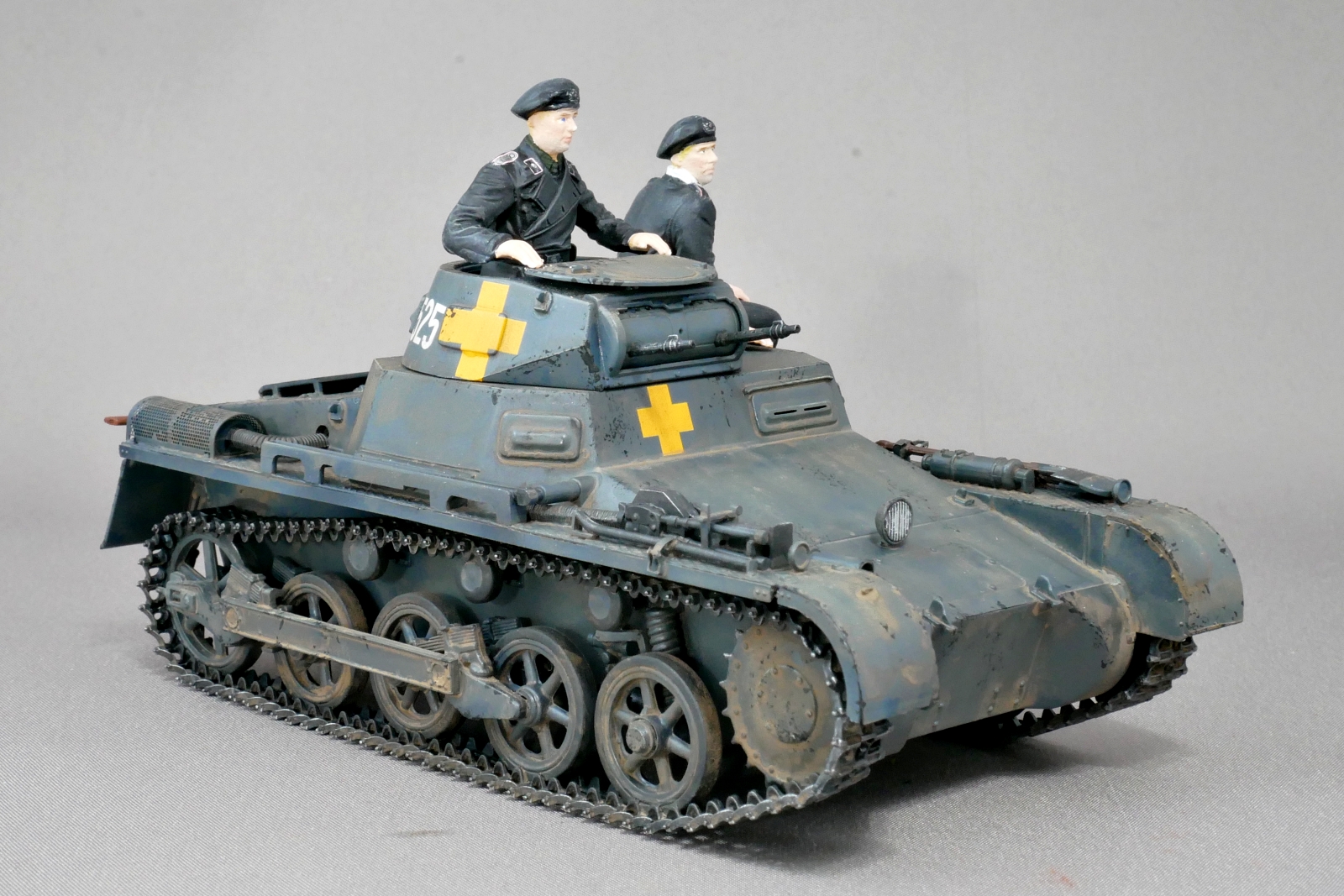
Even so, how did weapons advance so much in just a few years, from Tank I at the beginning of the war to King Tiger at the end of the war? The ongoing war in Ukraine has already been going on for several years, so the advancement of drones must be tremendous. Eventually, an insect-sized, self-tracking killer drone will be mass-produced… Allies can’t be attacked if the transmitter is on. It’s the same as Philip K. Dick’s ”Second Variety”.
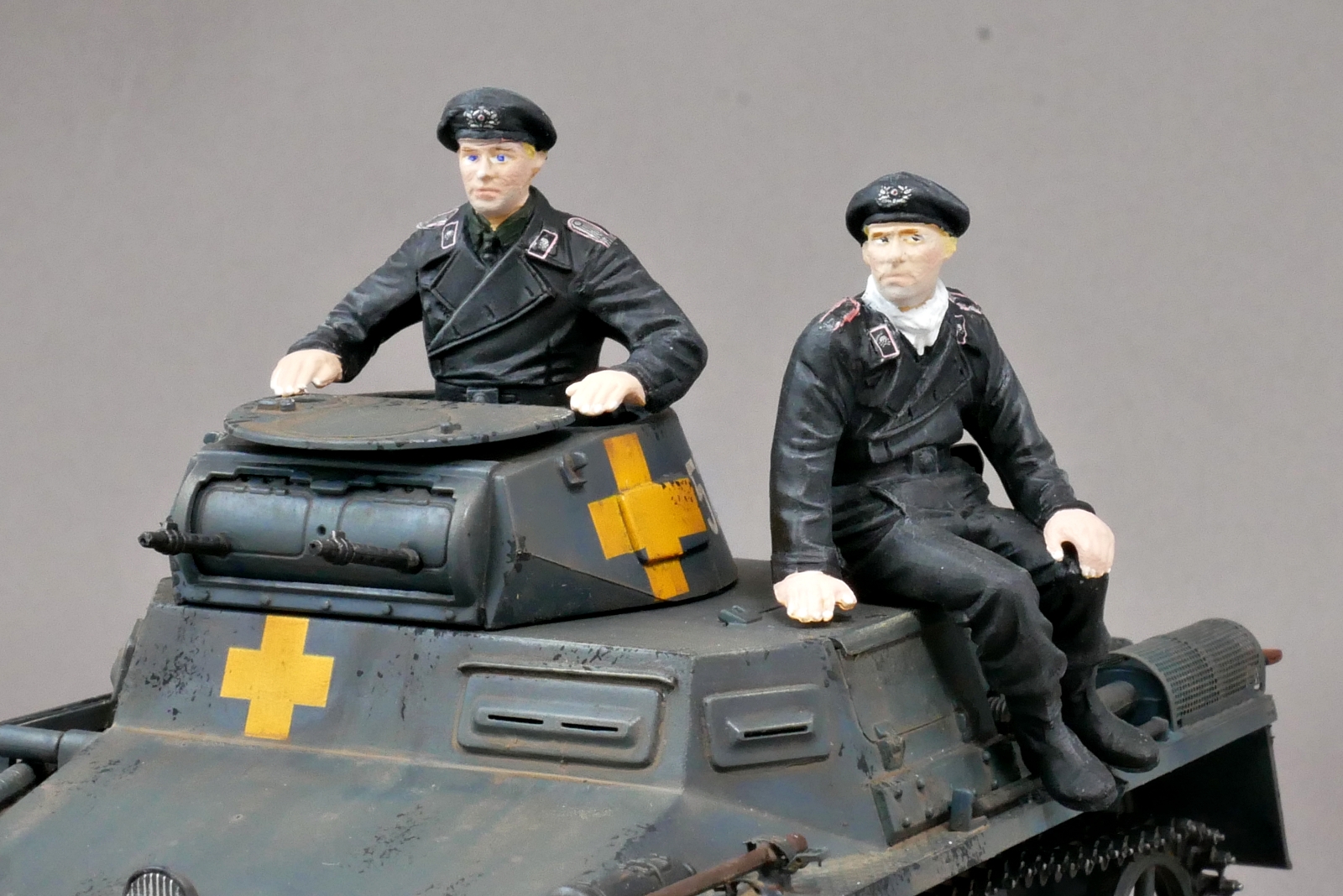
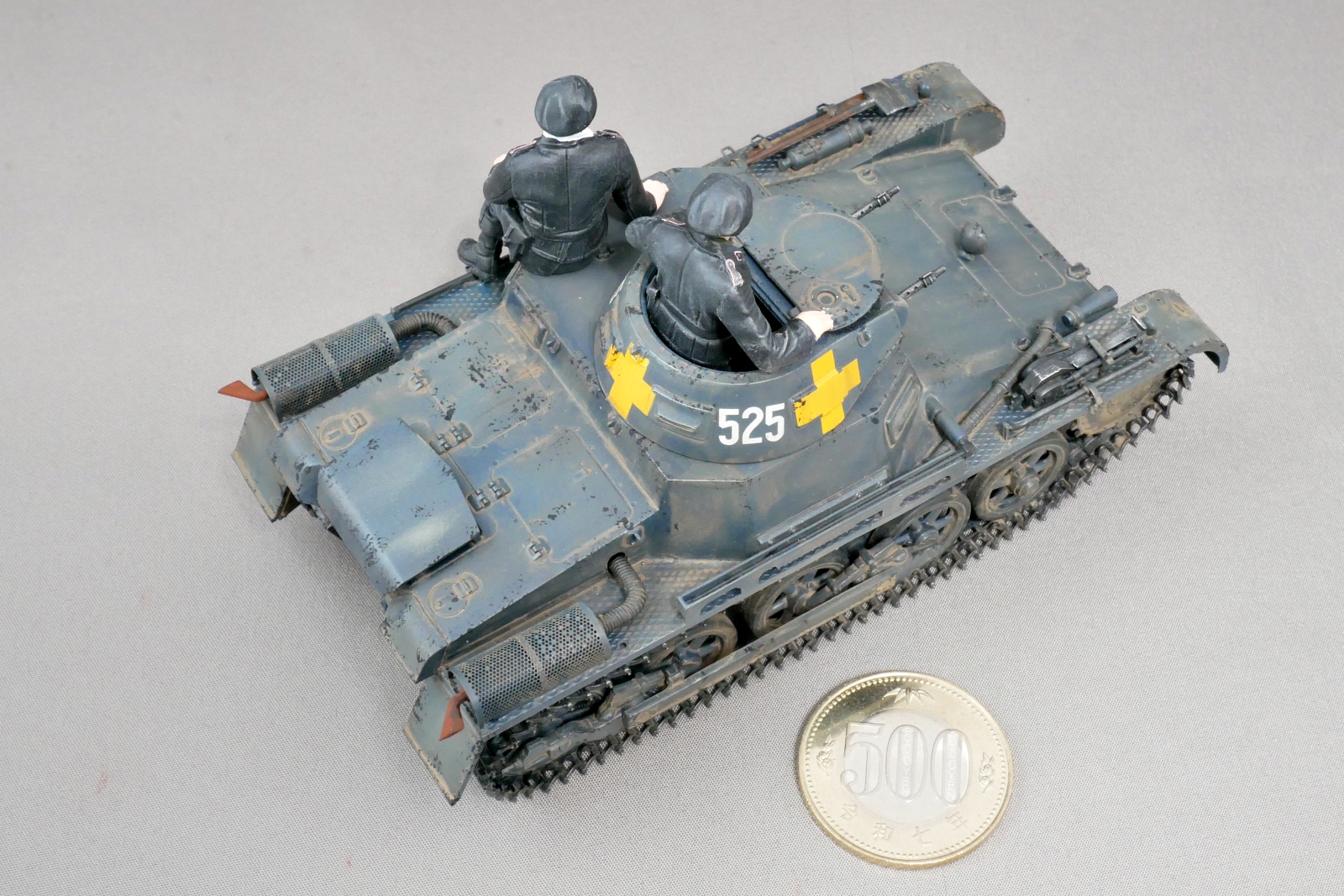
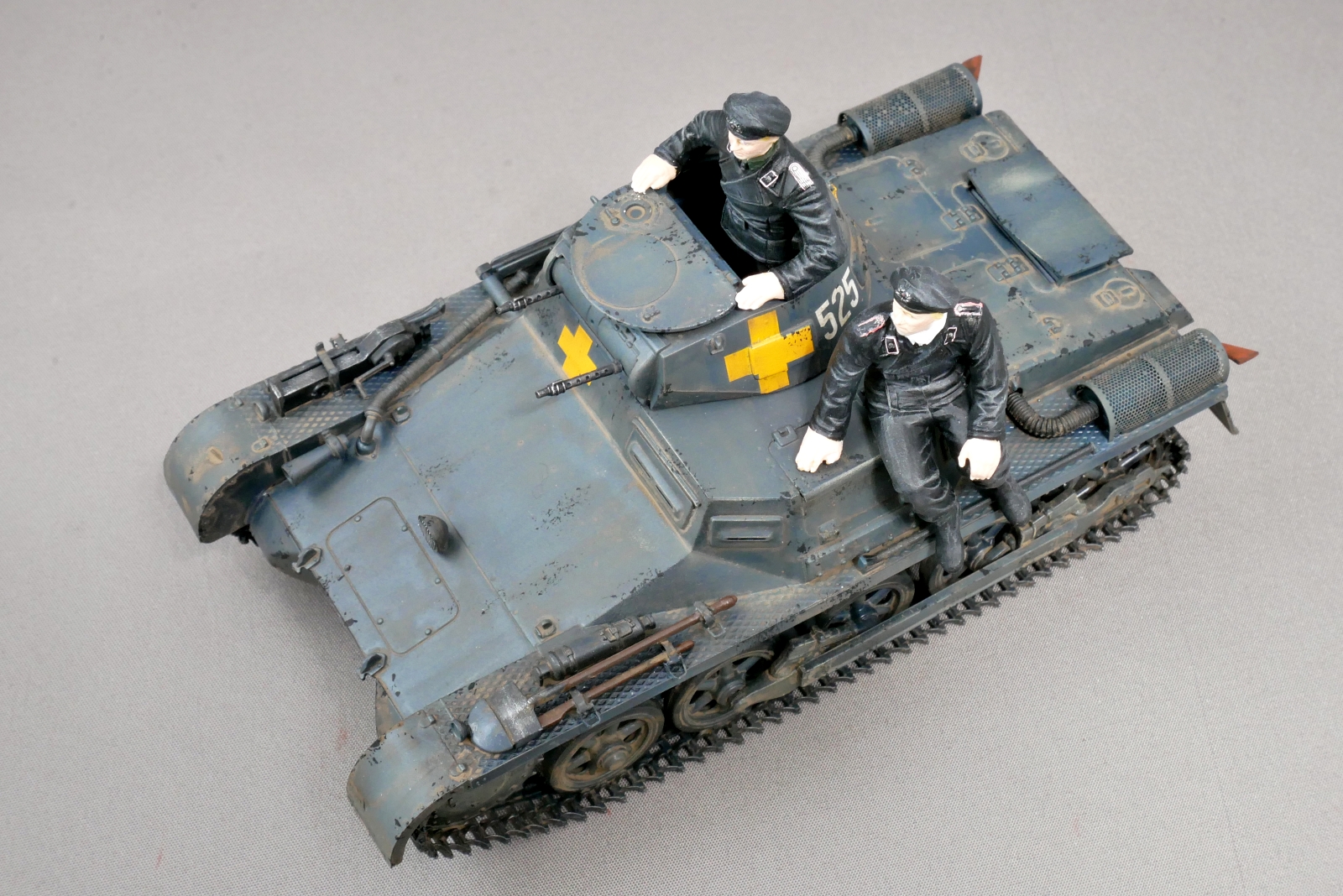
German Panzer I Ausf A made by Tristar. “Tristar” is a manufacturer that was enthusiastically supported by some model fans. If the name sounds familiar, it will surely bring back memories of the detail and composition. It is fun to play together and mesmerized to look at. It’s a perfect subject for those who want to finish in detail, and I think it’s a perfect kit to test your skills as a modeler.
(2025/08/01)



コメント